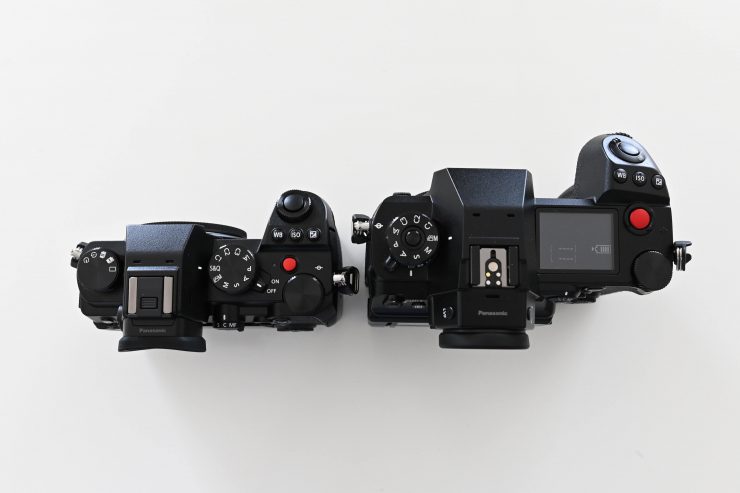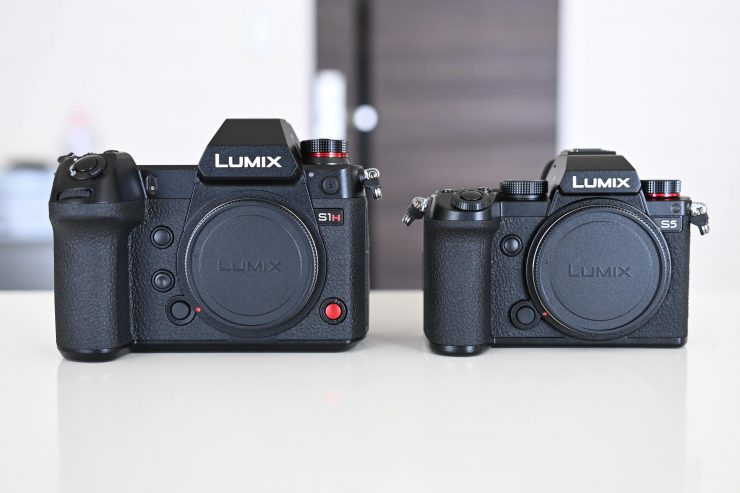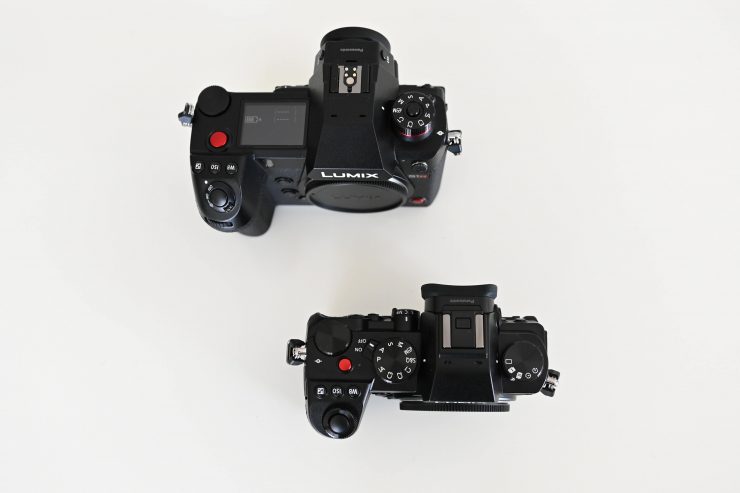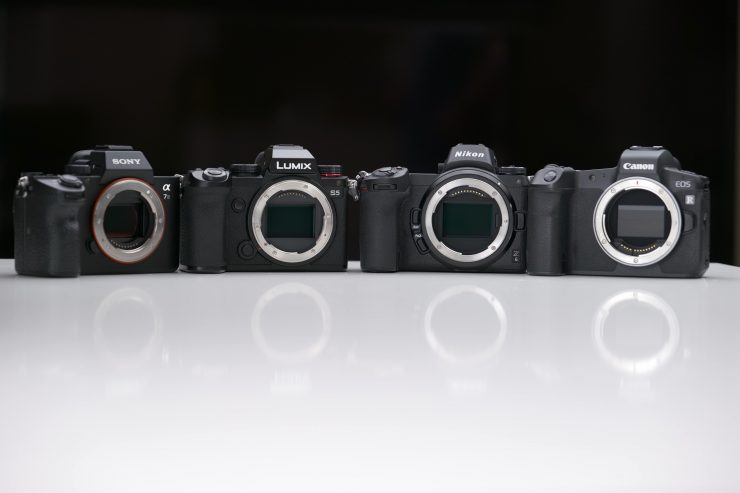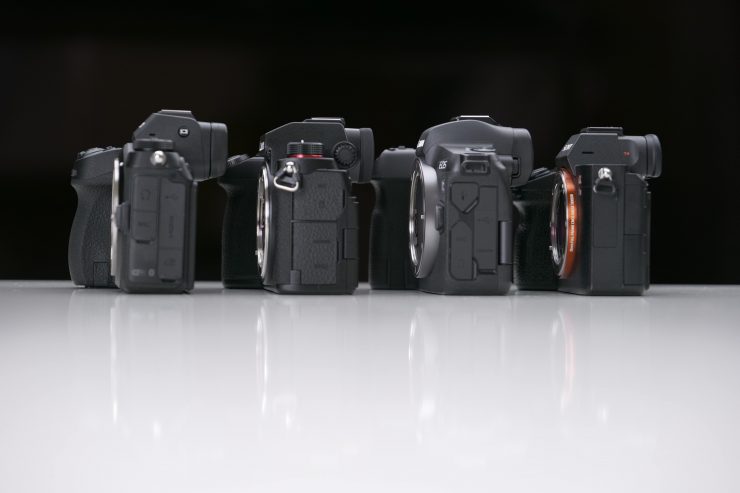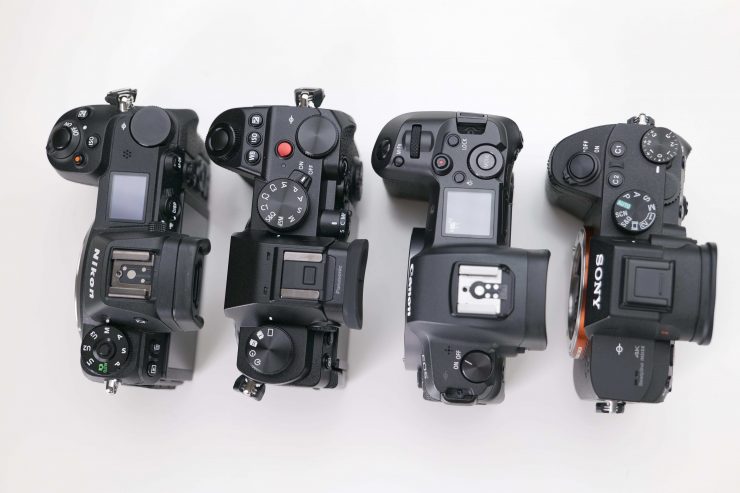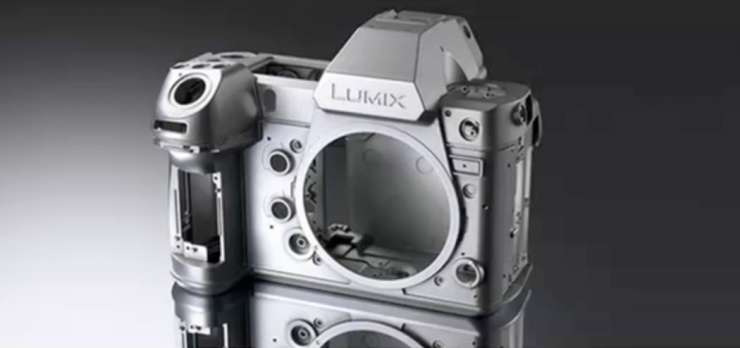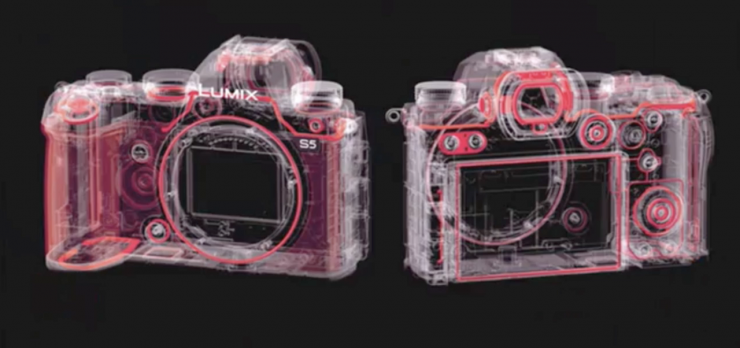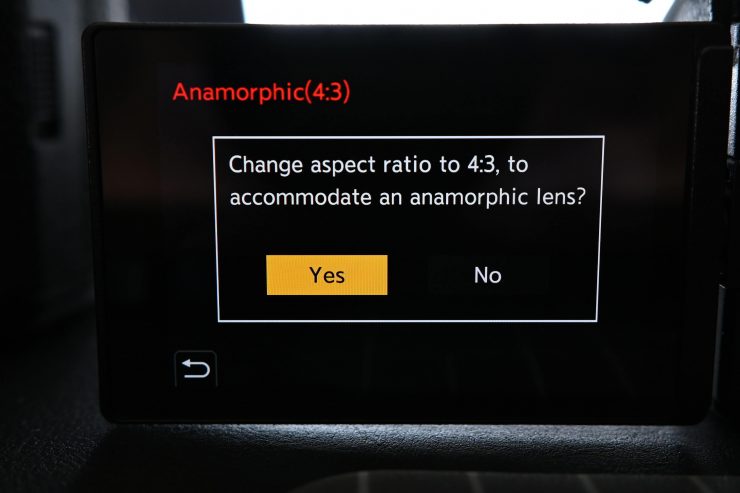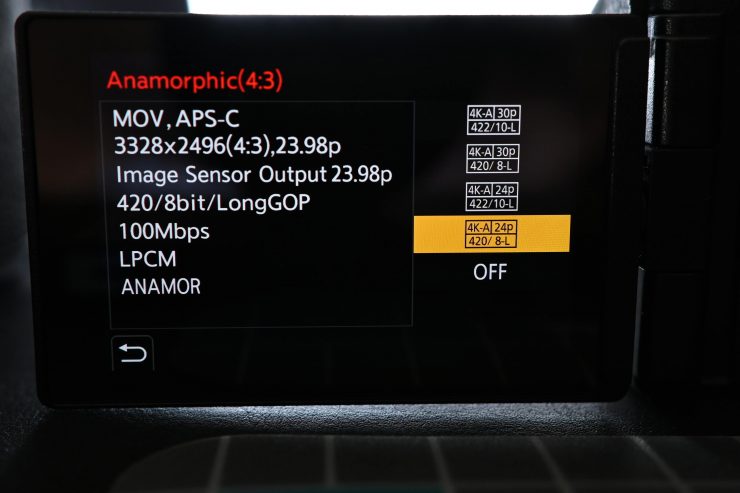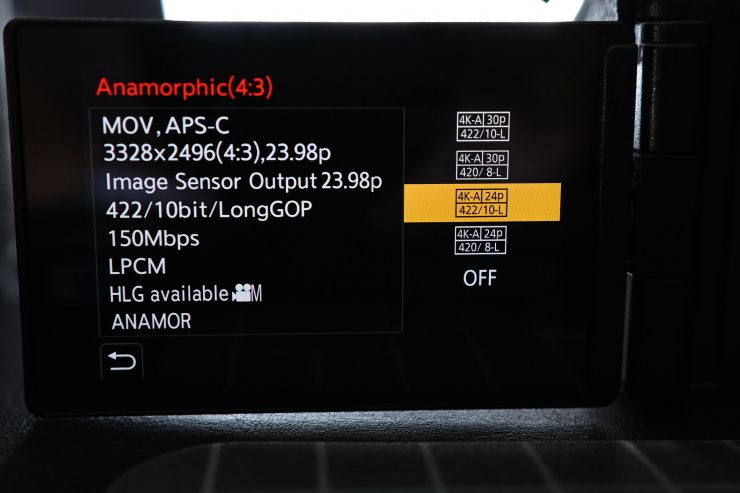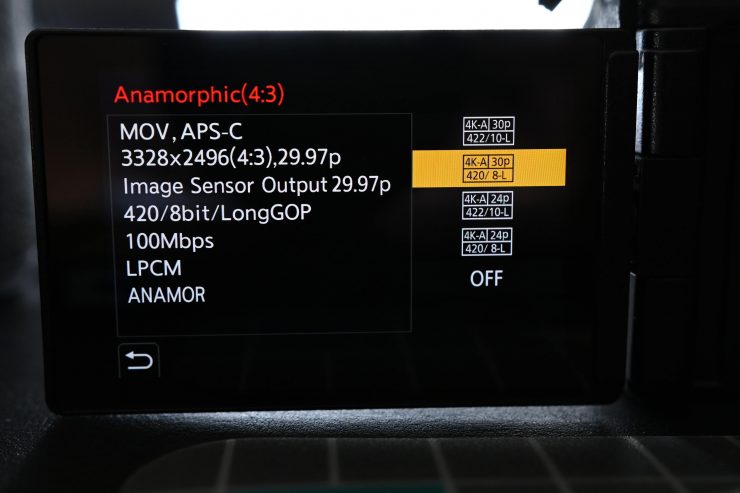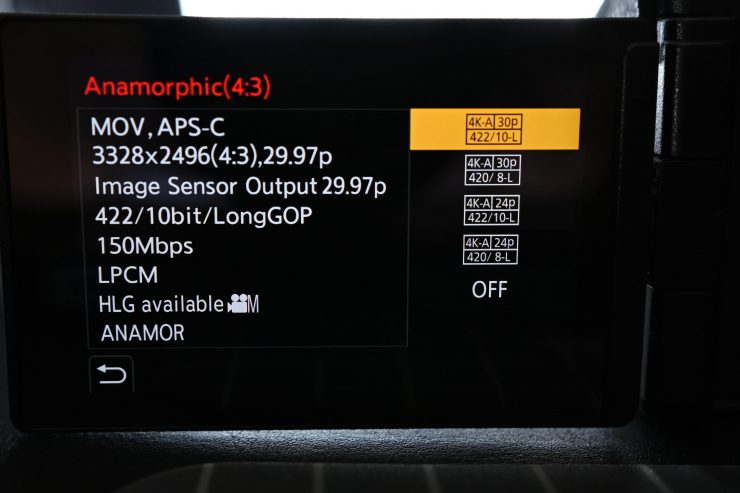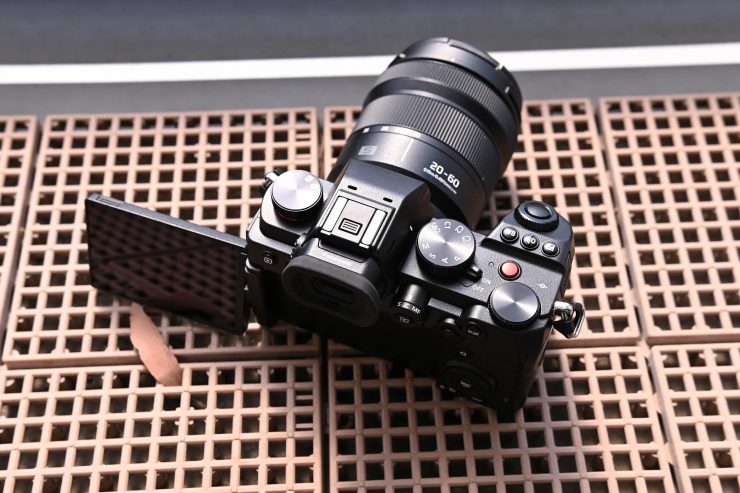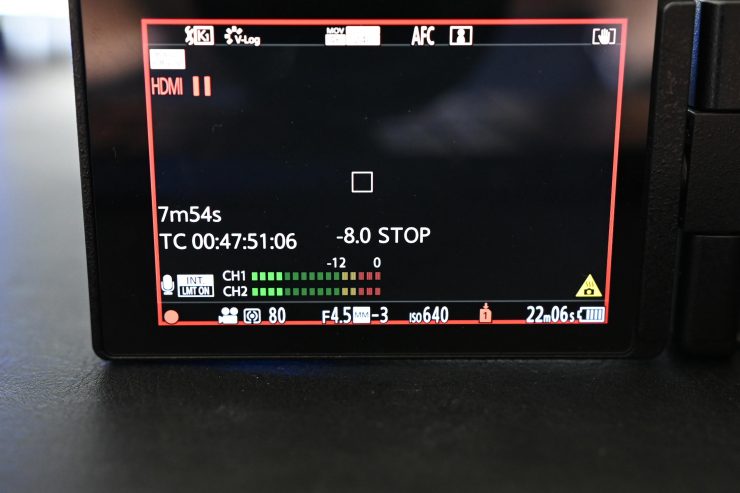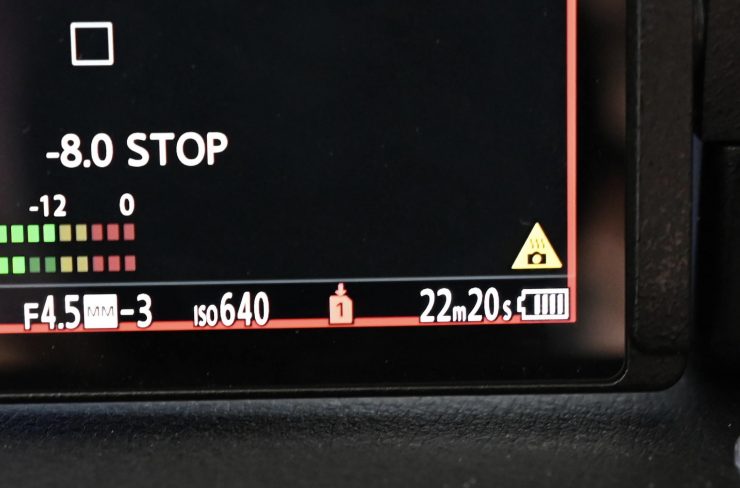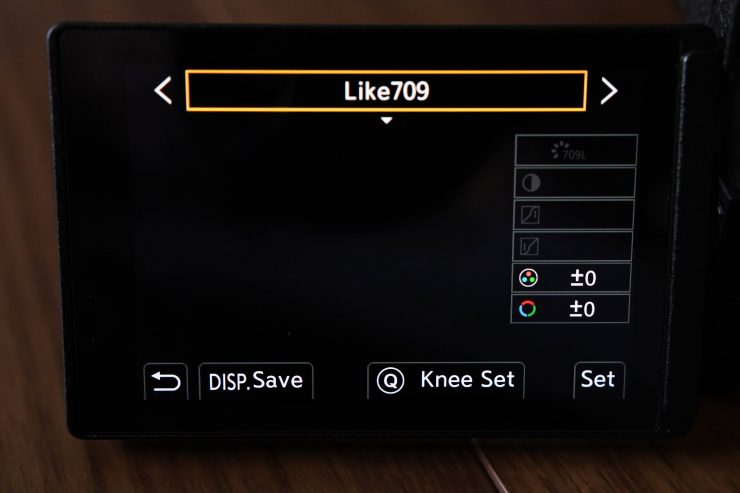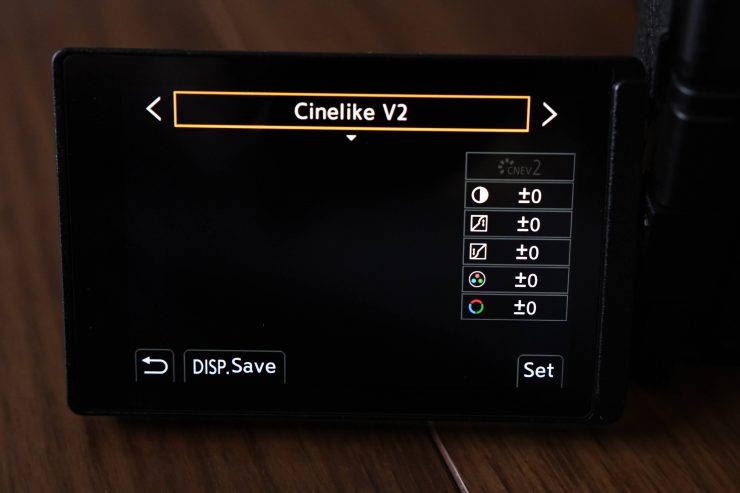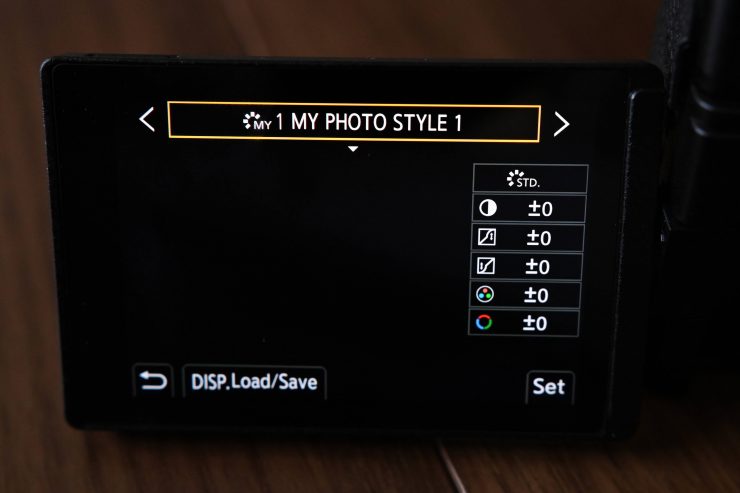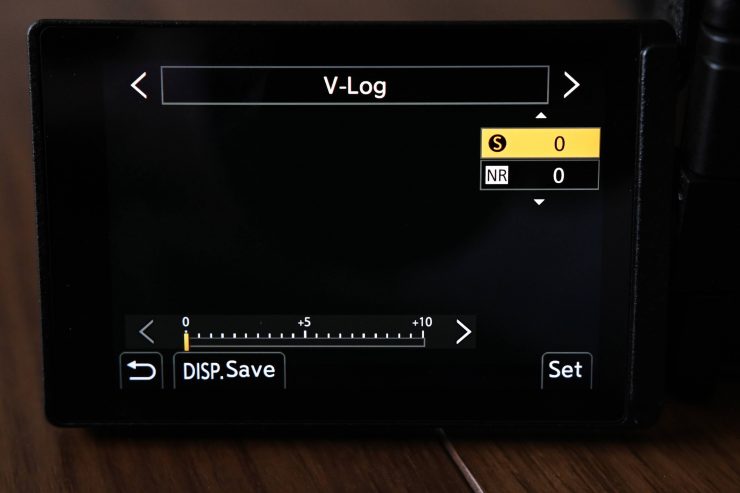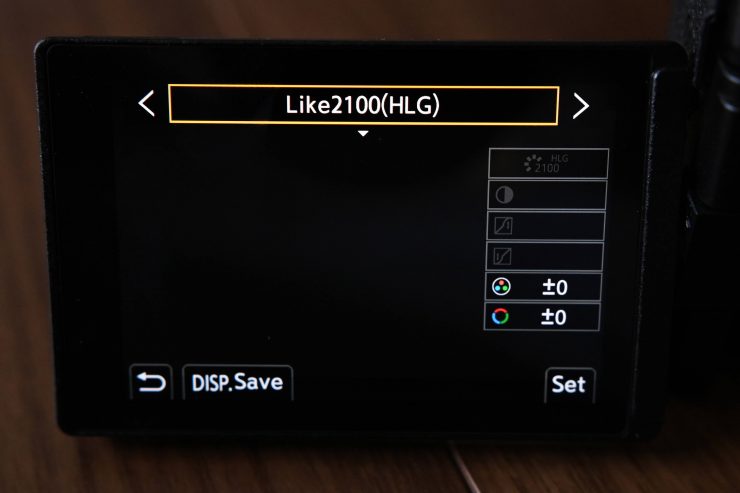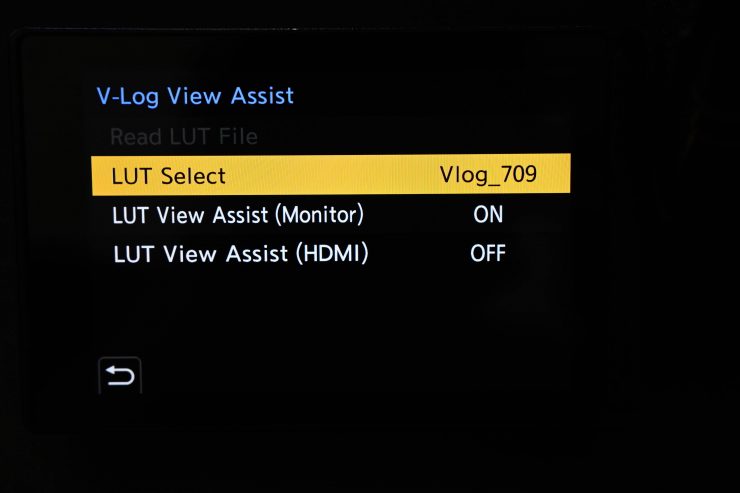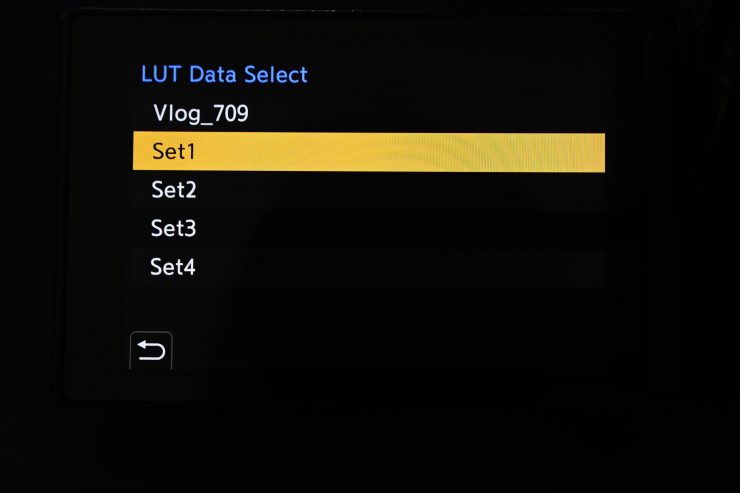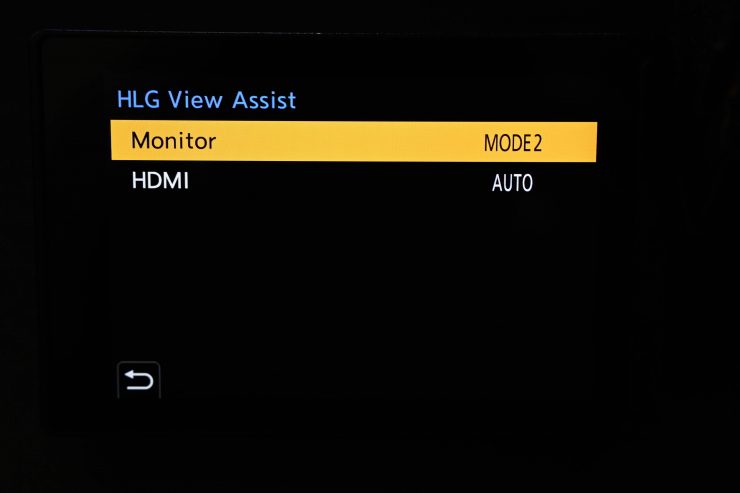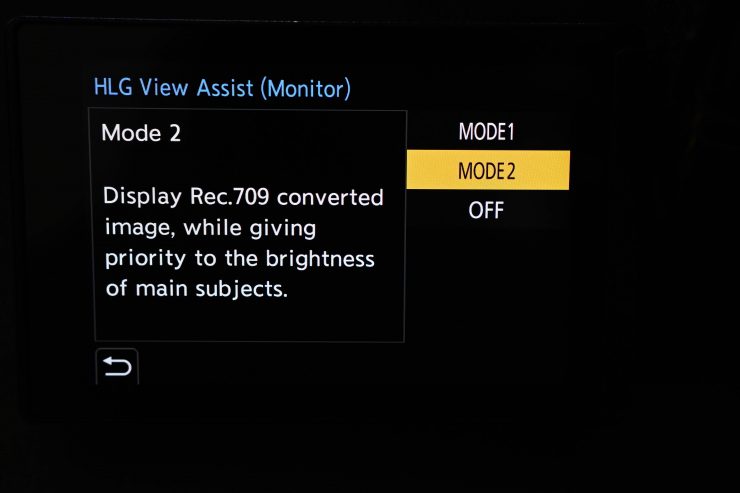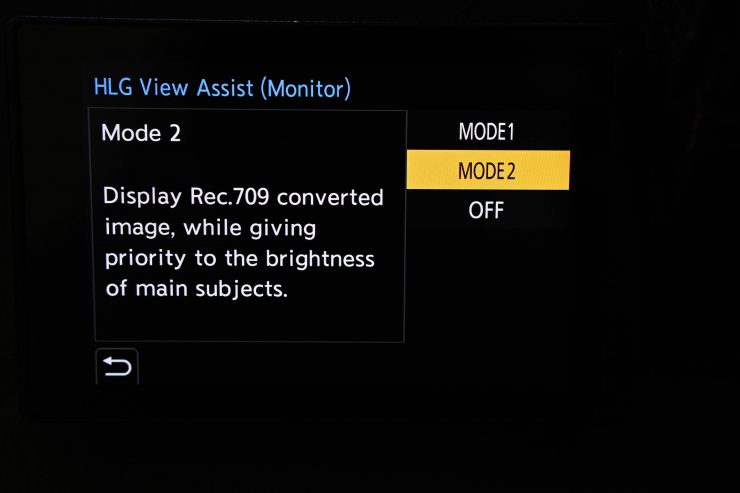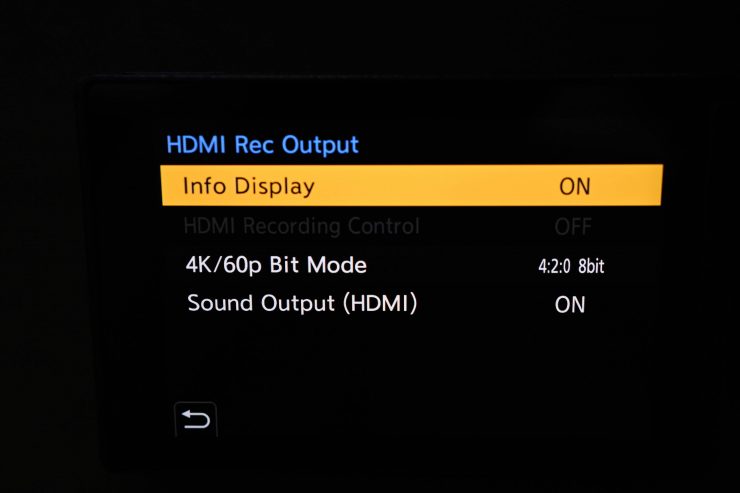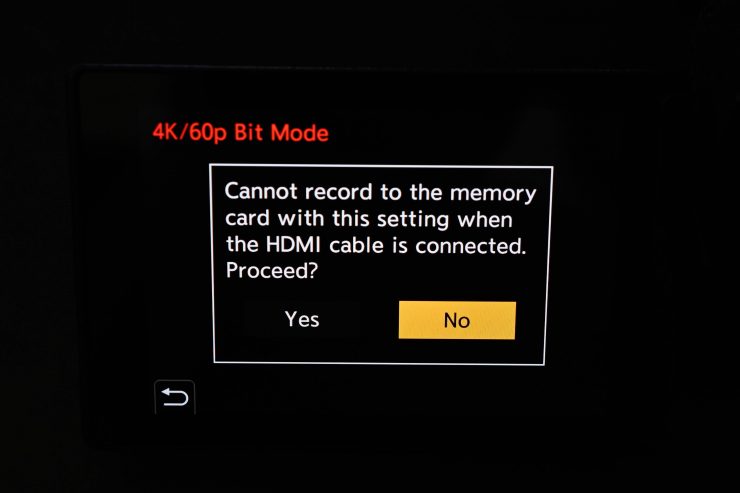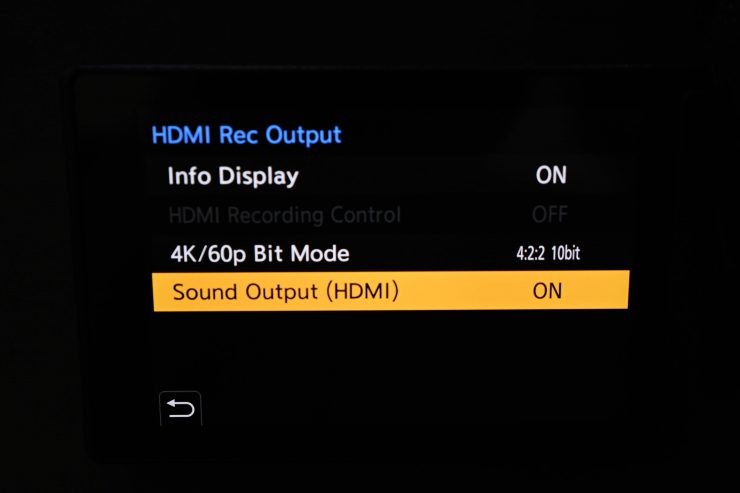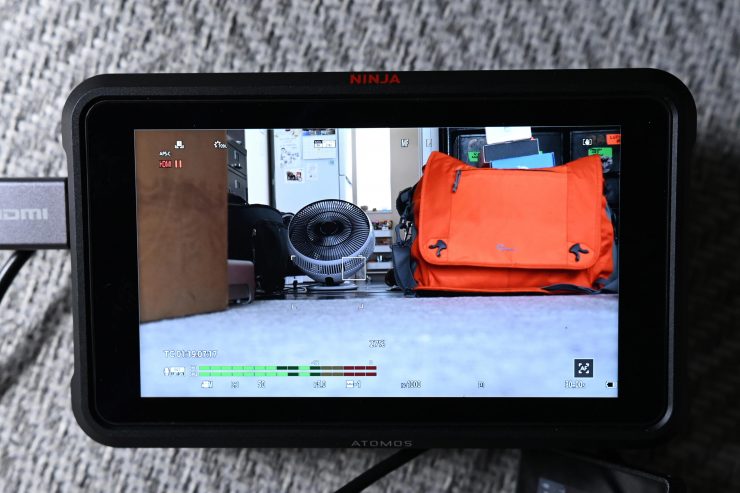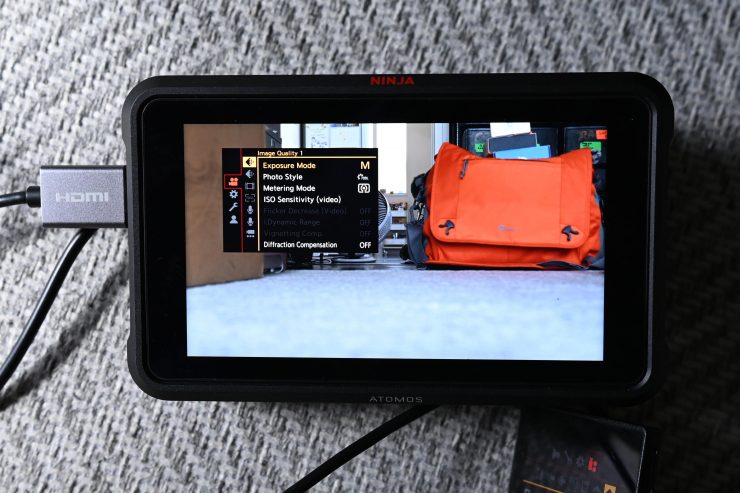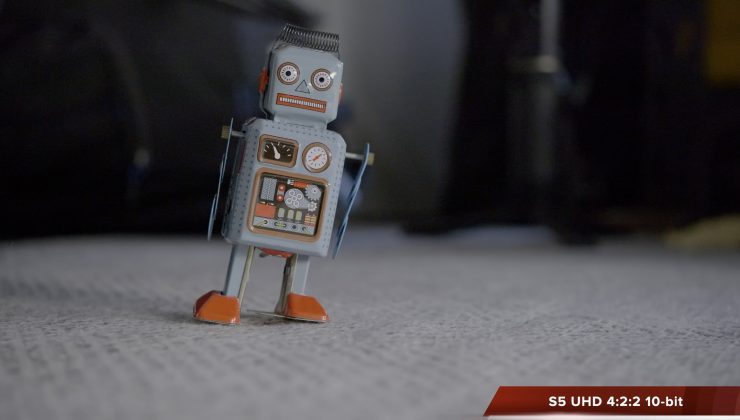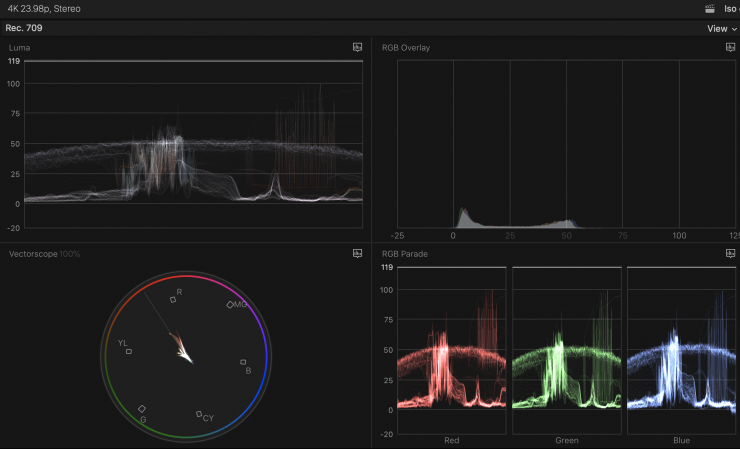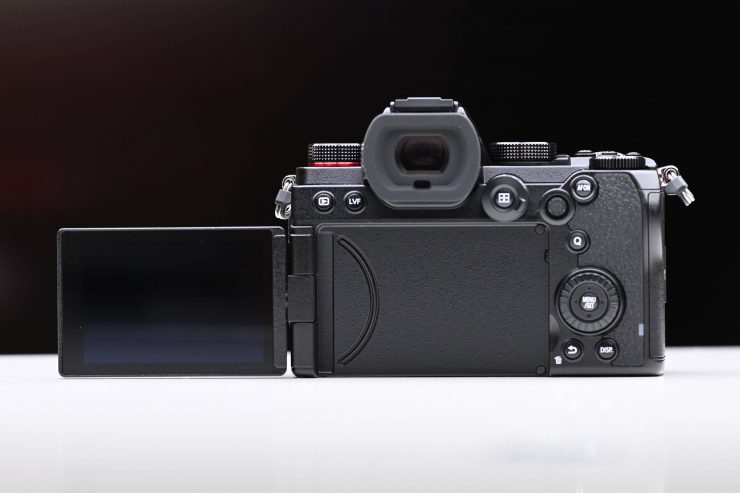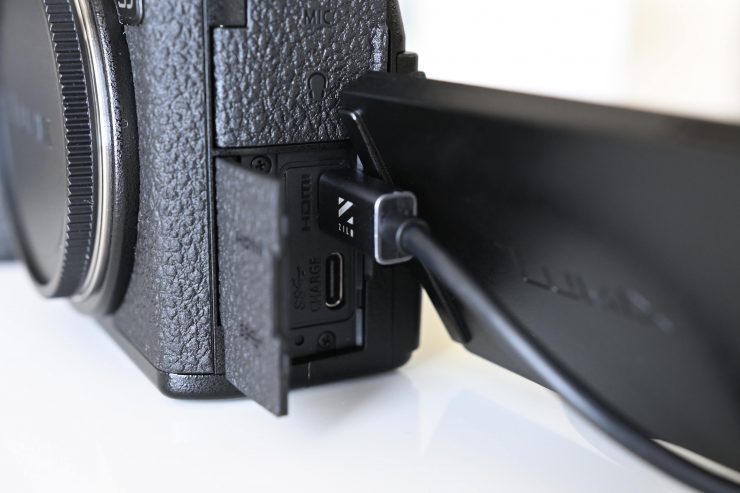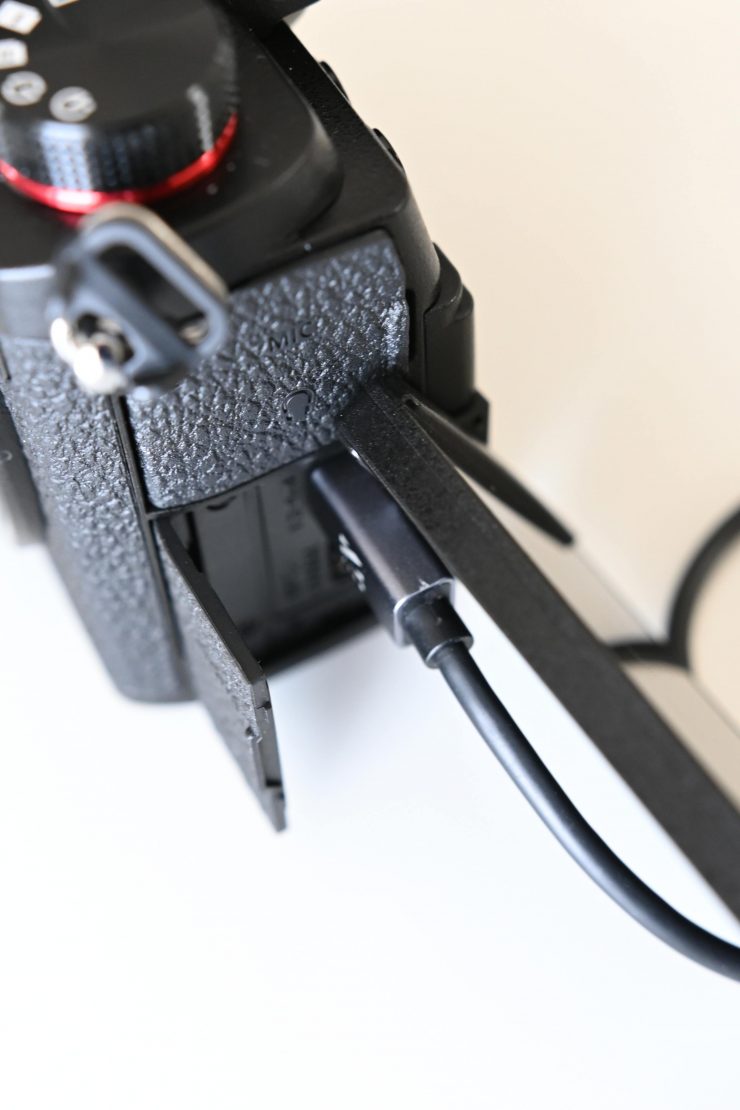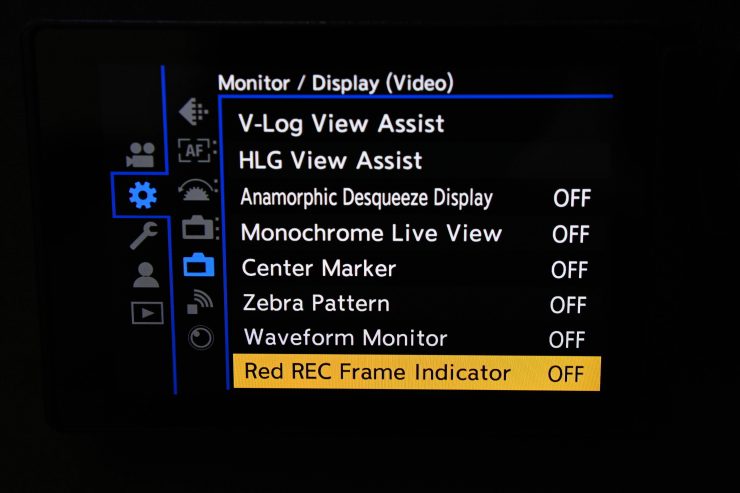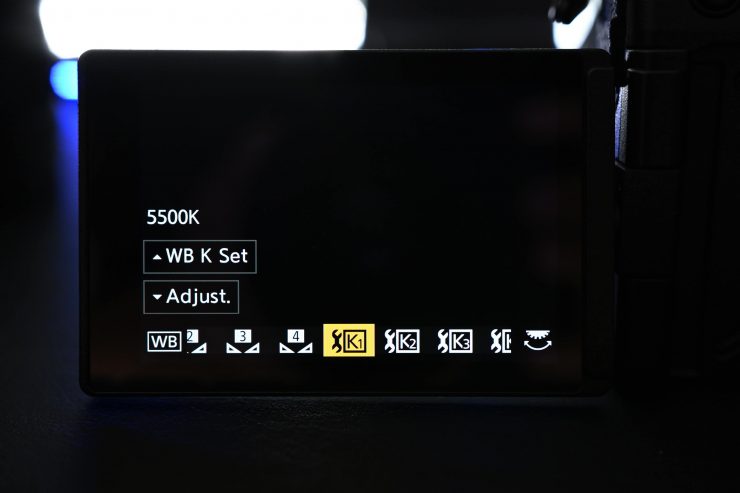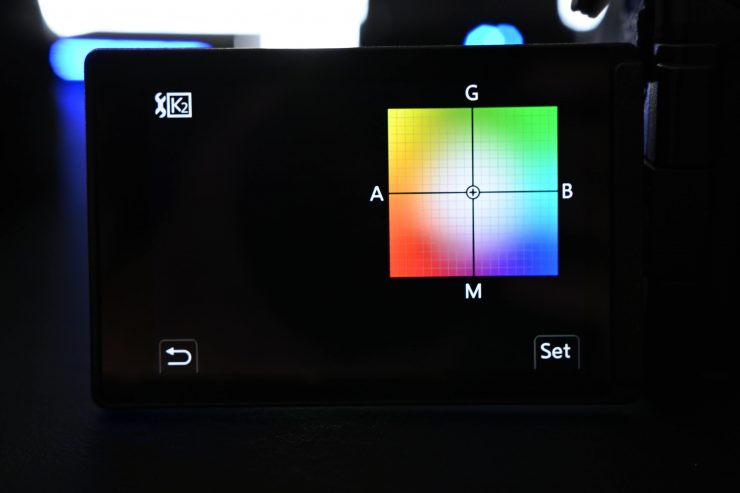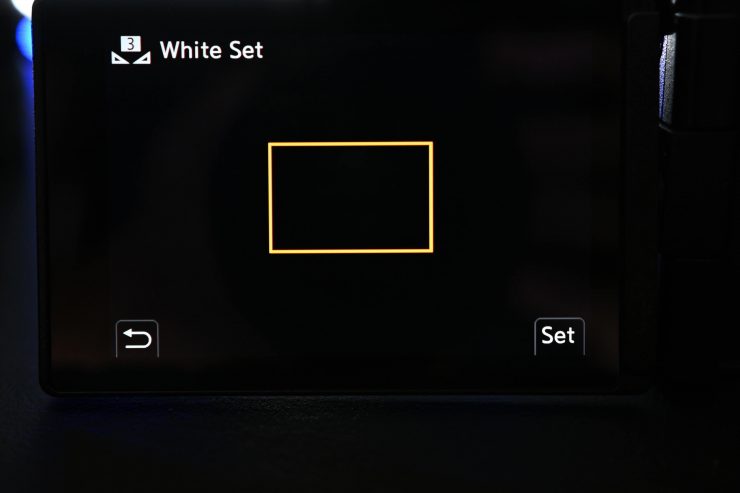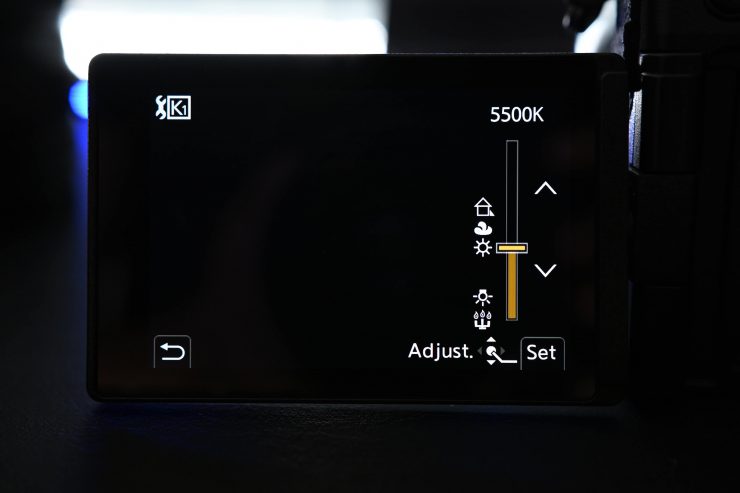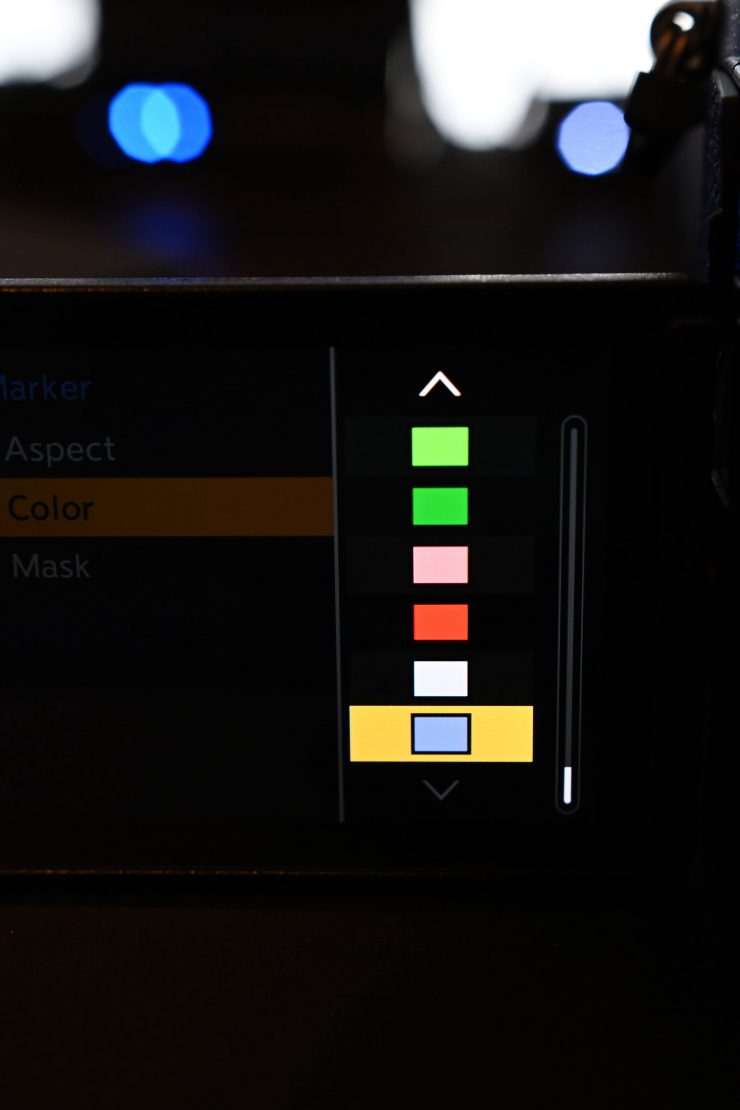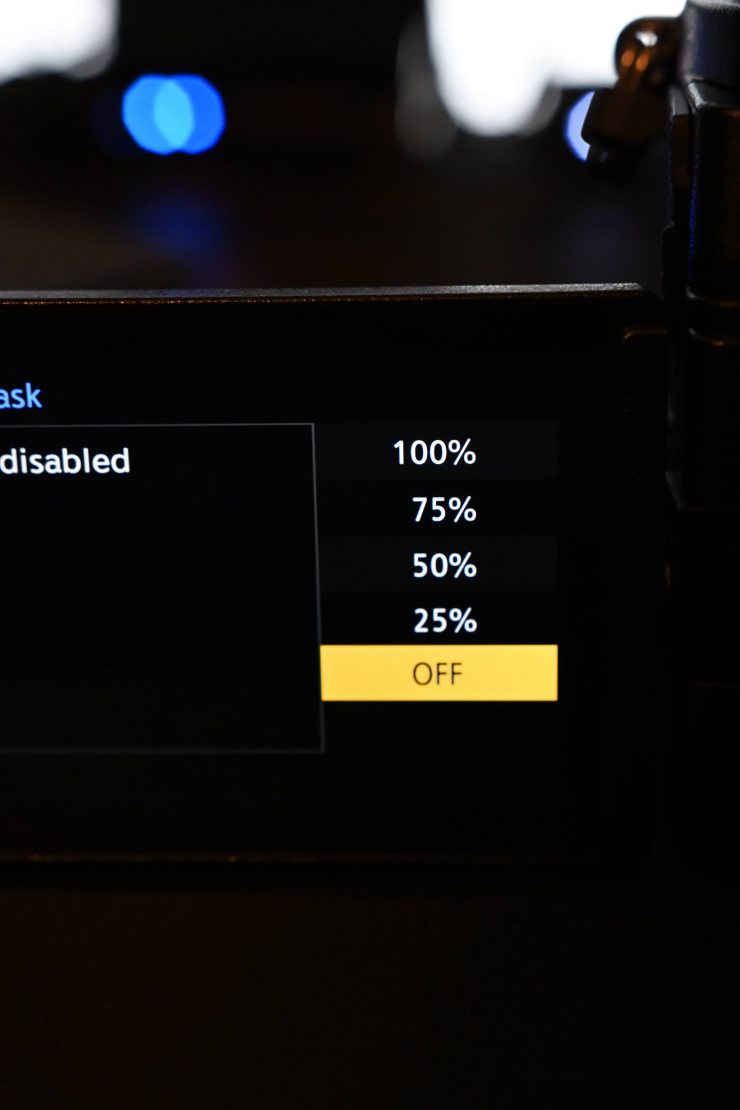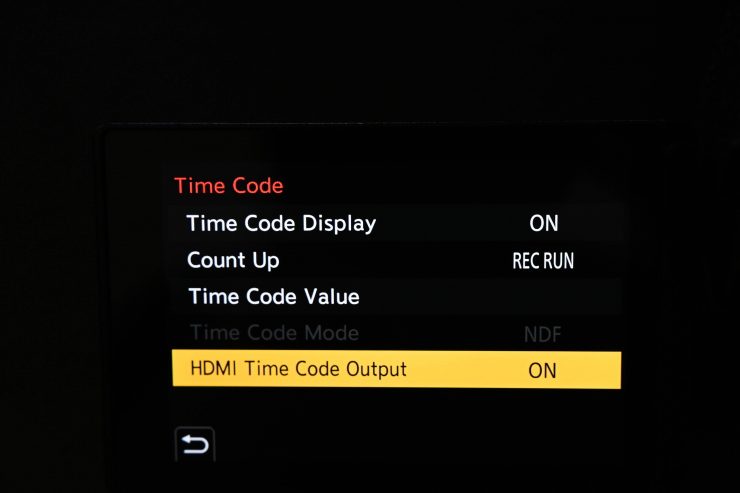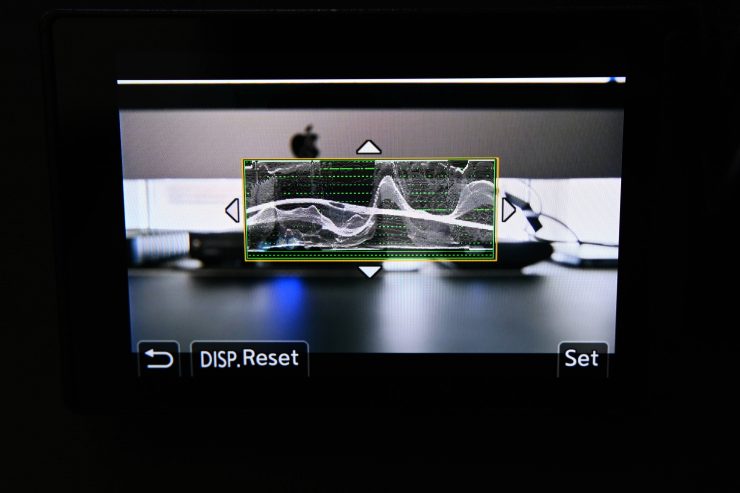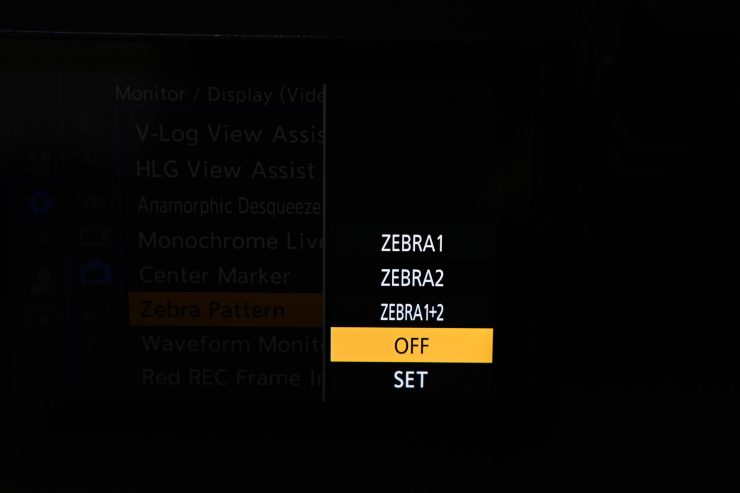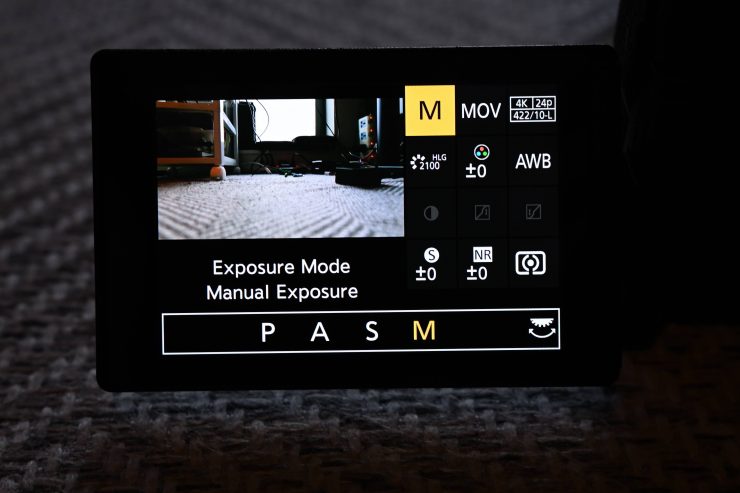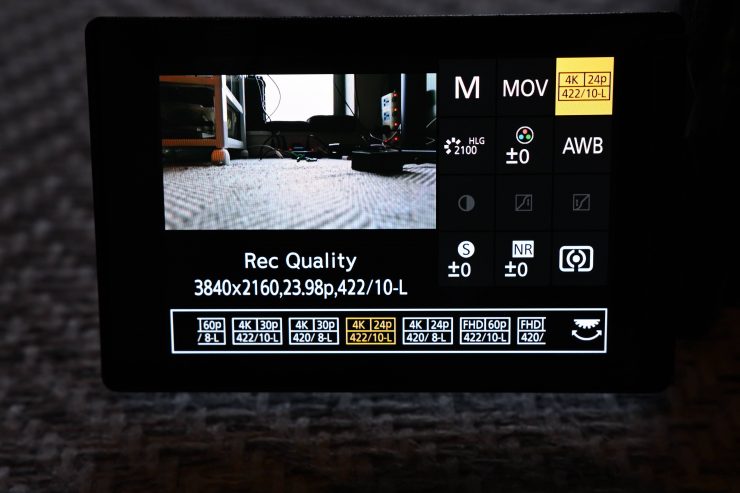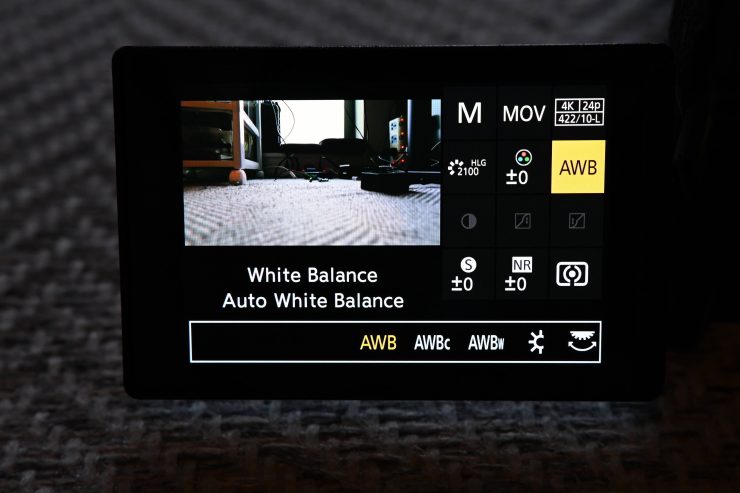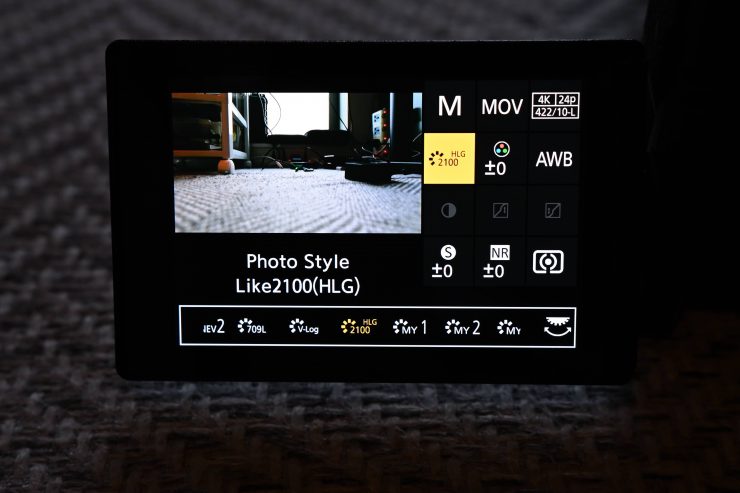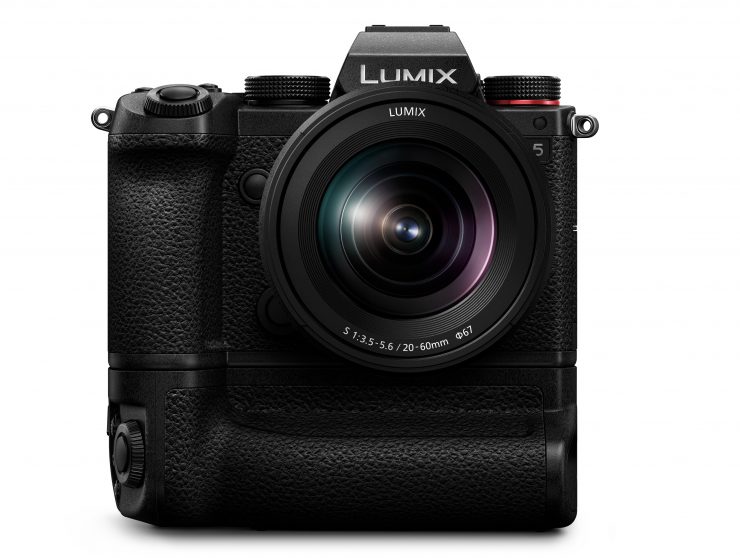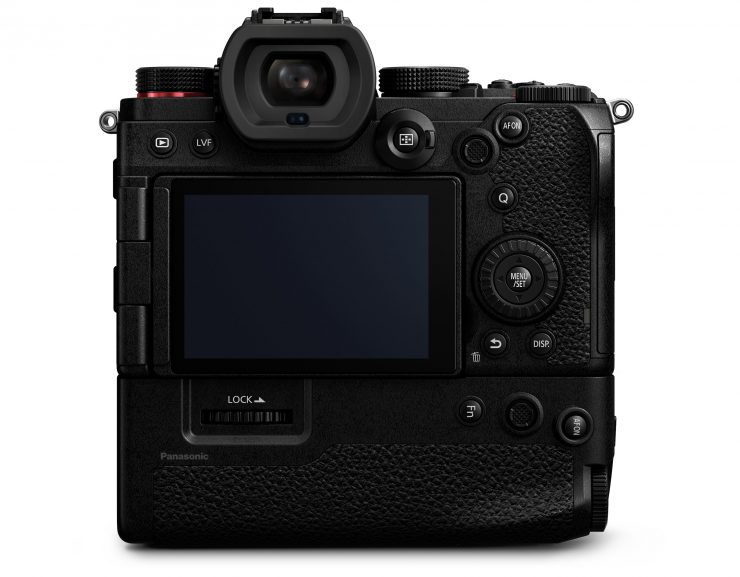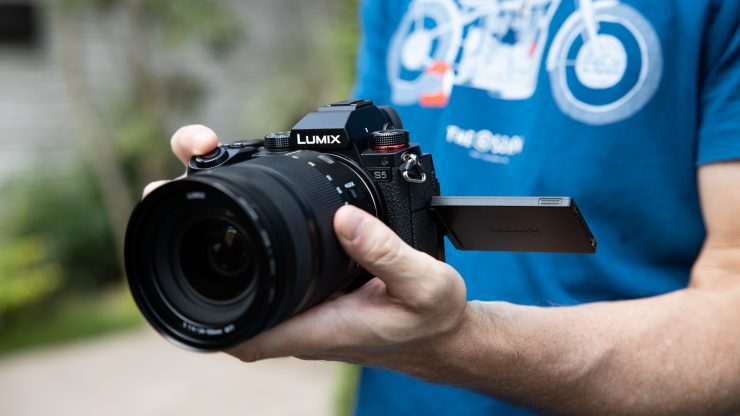
Panasonic has officially unveiled the Lumix S5, a full-frame hybrid mirrorless that is designed to compete against cameras such as the Sony a7 III, Canon EOS R, and Nikon Z6.
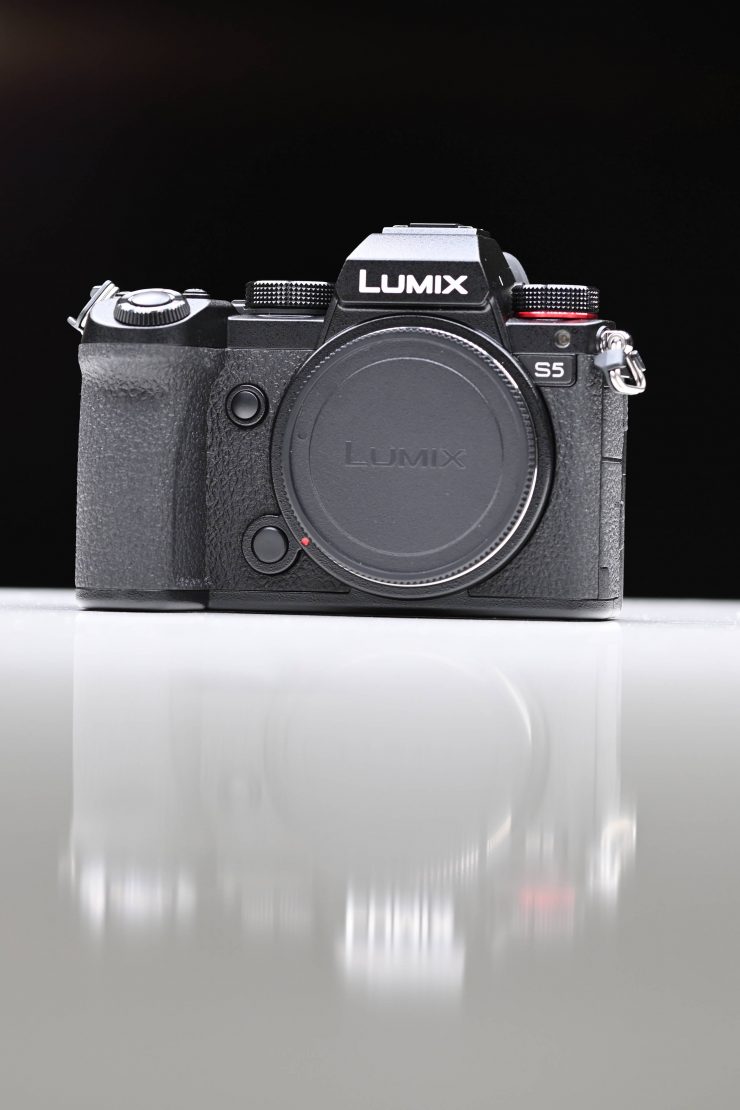
The S5 is a sub $2,000 USD mirrorless hybrid that looks to provide a good balance of still and video performance in a smaller, lighter camera body than other models in the Lumix S series.
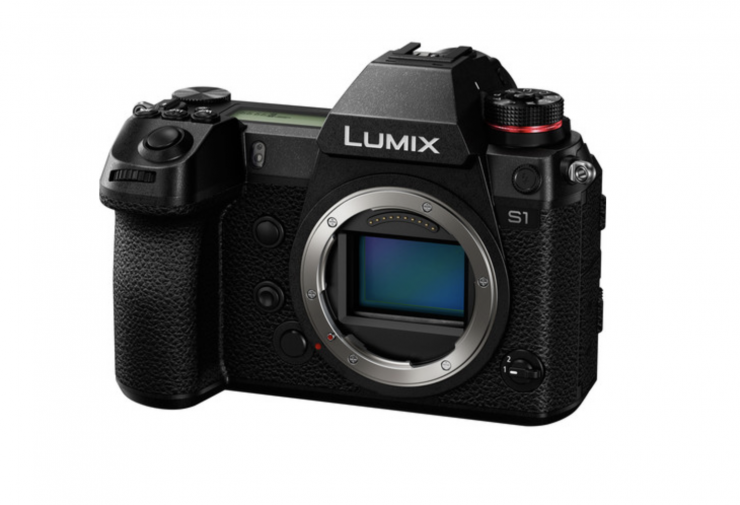
Panasonic S1 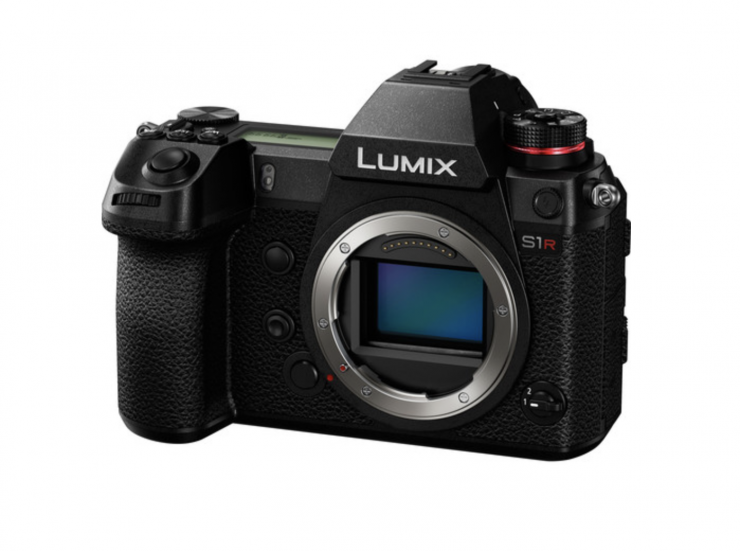
Panasonic S1R 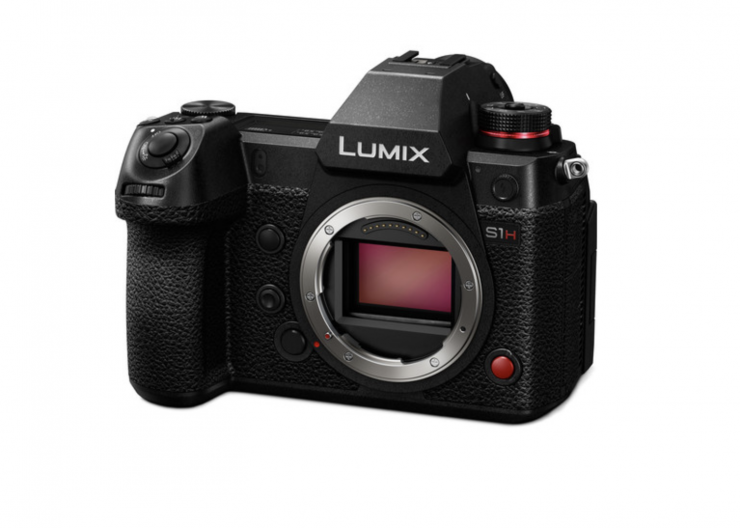
Panasonic S1H
The S5 now joins the S1, S1R, and S1H in the Lumix S series.
This is a first look at a pre-production unit of the S5. The camera I was testing is not a full production shipping unit. Please take this into account when reading this review. There may well be small changes (probably firmware) that will make there way into the production version of this camera.
I encourage anyone who is interested in the S5, or any other camera for that matter, to get a hold of one and try it out before buying. Reviews can only tell you so much and my thoughts on certain aspects of the camera are just an opinion. Never make a gear decision based on a single review. Read as many different reviews as you can and try and get hold of a camera yourself to see if it works for you.
Why make the S5?
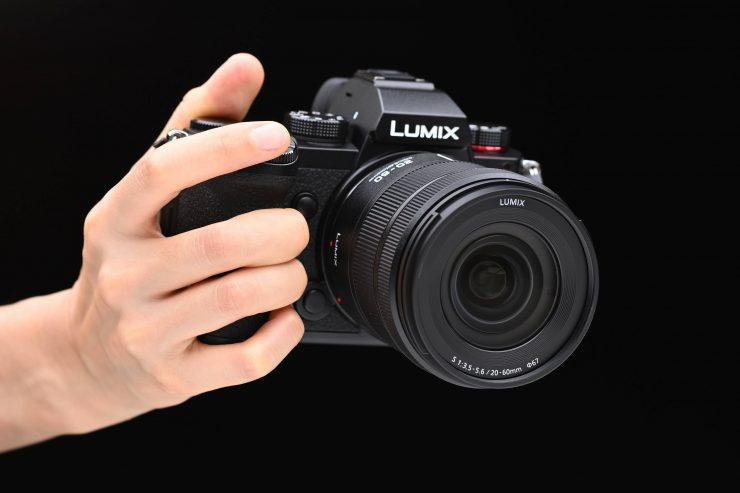
In a lot of ways the S5 is a full-frame version of the GH5, hence the name S5. To be absolutely crystal clear, the S5 isn’t a GH5 replacement, it is simply a new camera. Panasonic told me that the GH line isn’t being discontinued or phased out.
The S1H has been a big success for Panasonic, but the S1 didn’t catch on and it hasn’t enjoyed the same success as its bigger brother. In some regards, the S5 is probably the camera the S1 should have been.
Panasonic has been doing a lot of market research into what people liked and didn’t like about the S series. What they found is people liked the following:
- Video specifications
- Color science
- Reliability and build quality
- Lens mount adaptability
- Lens Quality
- Anamorphic shooting modes
What people didn’t particularly like was:
- Size/Weight
- Auto Focus performance
- Price
- Lens lineup
To address a lot of these issues Panasonic went back to the drawing board to create the S5.
Size & Weight
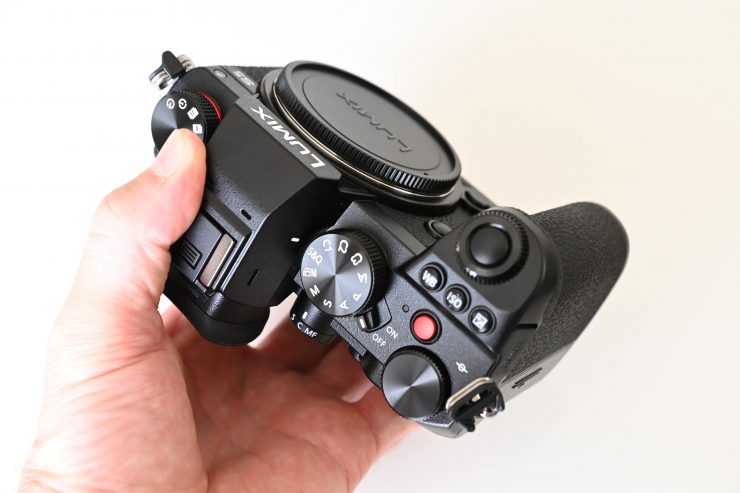
The S5 is considerably lighter and smaller than other Lumix S cameras. The body only weighs in at 630g (1.39 lb) and it has physical dimensions of (W) 132.6 mm x (H) 97.1mm x (D) 81.9mm. With a battery and card the S5 tips the scales at 712g (1.57lb). That actually makes it smaller and lighter than the GH5. For reference, the GH5 weighs in at 725g (1.6 lb).
The S1H weighs in at 1.16 kg / 2.56 lb (Body with Battery and Memory. The S1 tips the scales at 1.02 kg / 2.25 lb (Body with Battery and Memory).
I was actually surprised when I first saw the S5. After using the S1H it is certainly a much lighter and smaller camera. The size of the S5 more clearly resembles that of its closest competition.
The S5 is being touted by Panasonic as a direct competitor to the Sony a7 III, Nikon Z6, and the Canon EOS R. It will also have to compete against a new, affordable full-frame offering from Sony that is yet to be officially announced.
Above you can see how it compares in size to the Canon EOS R, Sony a7 III, and Nikon Z6.
So how does this weight compare to its main competition, the Sony a7 III, Canon EOS R, and Nikon Z6? Below you can see:
| WEIGHT | |
| Panasonic S5 | 714g (1.57 lb) |
| Sony a7 III | 650 g (1.43 lb) |
| Canon EOS R | 660 g (1.45 lb) (Body with Battery and Memory) |
| Nikon Z6 | 585 g (1.29 lb) (Body Only) |
As you can see, the S5 is still a little heavier than all of those other cameras, but its physical size is fairly similar.
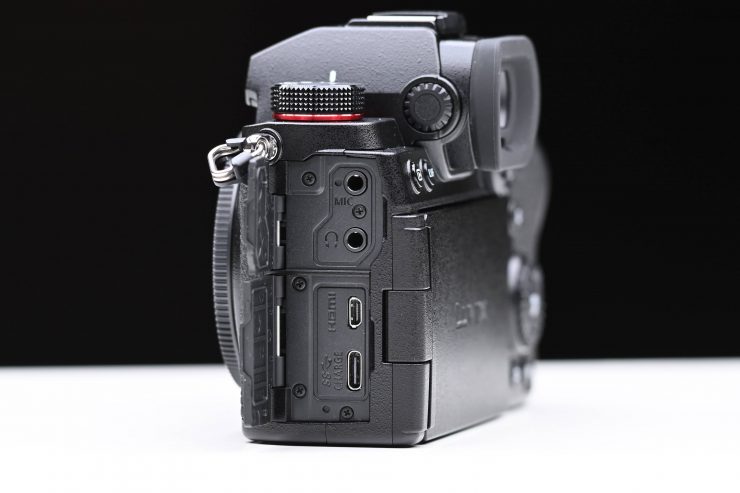
As Panasonic has shrunk the size of the S5 they have had to use an HDMI (Type D) Micro connector. I much prefer the full-sized HDMI ports that are on the S1H, S1, and S1R. As soon as you start making something smaller there are inevitably compromises that have to be made, unfortunately getting rid of a full-sized HDMI port is one of those compromises.
Build Quality
The S5 is made out of a magnesium alloy body and it has been designed with dust and splash resistance in mind. Sealing materials have been used around all of the buttons and dials. The S5 feels every bit as well made as the S1H.
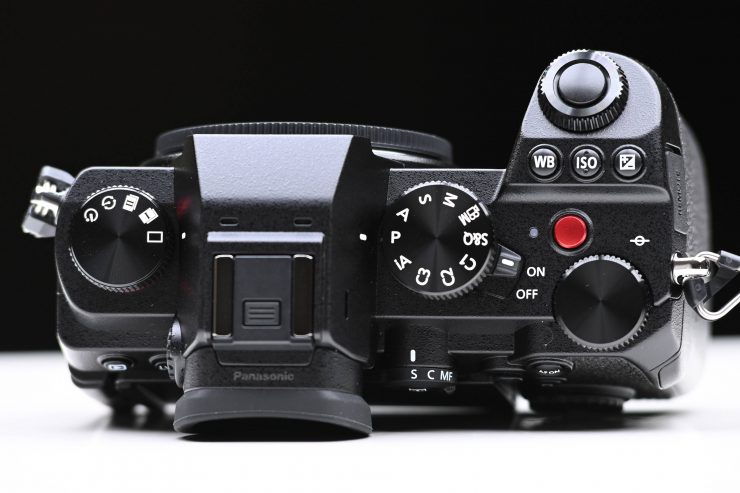
The control layout of the S5 is pretty good. There are dedicated WB, ISO, and Record buttons just like on the S1H.
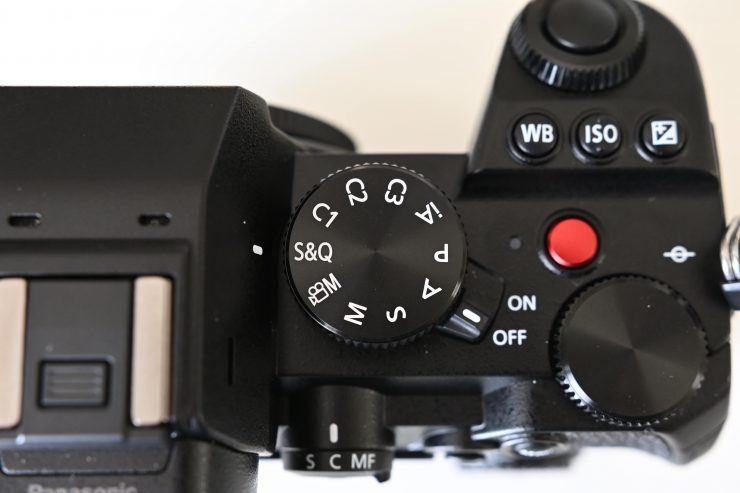
I like that Panasonic has added a dedicated S&Q dial. If you are in the right recording format you can simply just move the dial one spot and be shooting at higher frame rates quickly.
I did miss not having an LCD display on top of the camera like there is on the S1H. The large top screen on the S1H is a great feature because it lets you see all of your key settings and parameters very quickly and clearly. It also lets you see how much remaining battery life you have even when the camera is turned off.
You also don’t get the dial lock mechanism that you do on the S1H. This personally doesn’t matter to me, but I thought I would mention it.
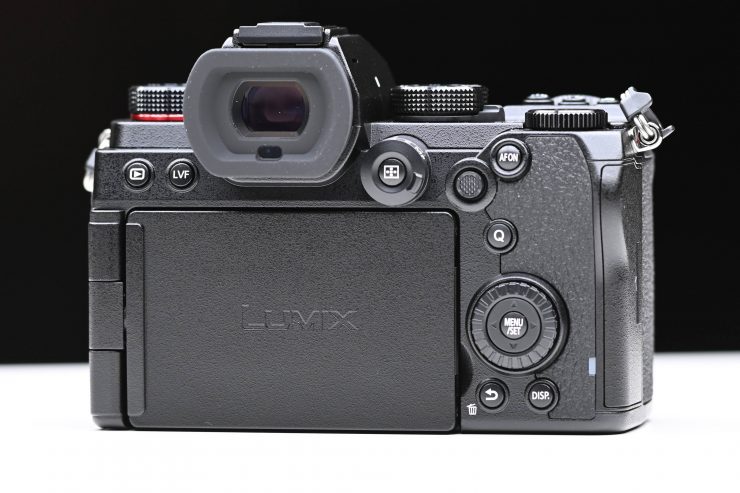
The back of the camera features a fairly simplistic layout.
Handling
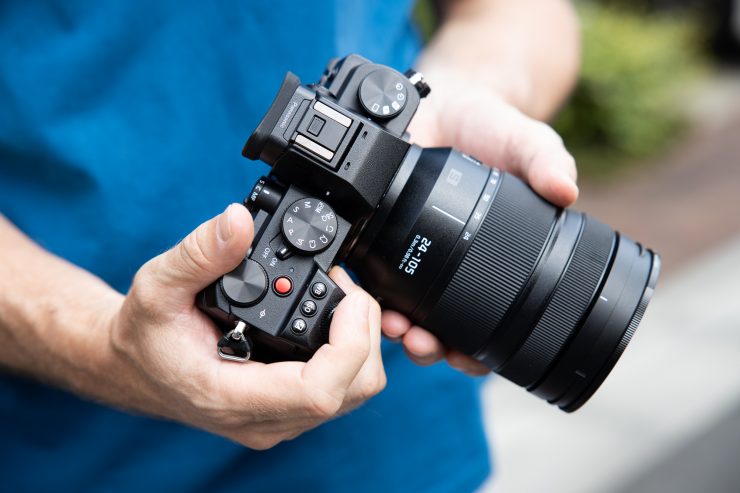
The S5 is easy to handle and operate, unlike the S1H, which if you don’t have large hands, can be a handful to hold correctly. The reduced weight of the S5 also makes it easier to handheld and use the camera for longer periods of time. All the buttons and controls are easy to access.
If you are holding the camera in front of you, you can rest the S5 in the palm of your hand and it is supported nicely. With the larger S1H, this isn’t as easy to do.
Anybody who has used a Lumix S series camera will find the control layout very similar to the S5.
Sensor
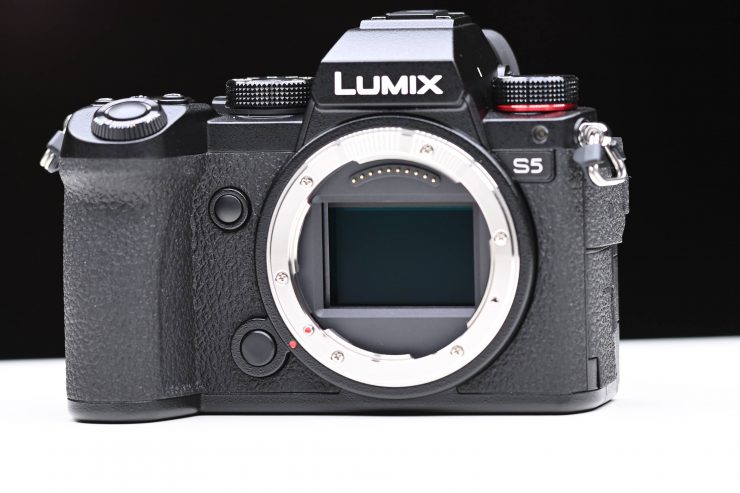
The S5 is using a 24.2-megapixel 35mm full-frame CMOS sensor (35.6 mm x 23.8mm) that’s capable of capturing UHD (eventually 4K DCI as well) resolution video and still images measuring 6,024 x 4,016 pixels. The camera does not have an OLPF (Optical Low Pass Filter) like the S1H. Signal processing is done by the Venus Engine.
Panasonic doesn’t officially disclose whether the sensor is the S5 is the same as the one used in S1H, but given it is the exact same size and it uses the same dual native ISO, I’ll leave it up to you to decide if it is or isn’t the same sensor.
There has been much debate about increased resolutions and whether we actually need them. The S5 uses a 6K sensor as opposed to a native 4K sensor. Due to loss of resolution to Bayer pattern math, at least 5.7K is needed to deliver proper 4K RGB. It’s the same reason ARRI uses 2.8K to deliver 2K. The S5, in theory, should out-resolve any 4K native camera, as it can clearly delineate 2000 line pairs while most others max out at about 1600.
The sensor also utilizes a non-dust system. This prevents dust from adhering to the sensor which is nice when you are changing lenses. How it works is that a supersonic wave filter (SSWF) creates around 80,000 times / second of ultrasonic vibration between the image sensor and the shutter each time the power is turned on.
According to Panasonic, the Venus engine used in the S5 offers a lot of advancement in terms of resolution and reproducibility for full-size image sensors. They go on to say that Venus offers multi-pixel brightness and intelligent detail processing and good moire suppression performance.
In addition, the high-precision multi-process NR installed in the engine is said to improve the separation performance of the detail and flat parts of the subject. By separating the signal and noise components more accurately and effectively suppressing noise according to the characteristics of the image, Panasonic claims it is possible to achieve a stunning and realistic depiction even with high sensitivity.
Video Specifications
Despite being a hybrid mirrorless camera, Panasonic is pushing the video specifications as one of the main selling points of the S5.
While the S5 doesn’t have the same video specifications as its big brother the S1H, there’s still quite a lot to like.
Panasonic was the first company to introduce 4:2:2 10-bit internal recording in a mirrorless hybrid and they now have 7 cameras that are capable of recording UHD 4:2:2 10-bit internally. No other company making mirrorless hybrids can claim that. Here are the 7 cameras capable of capturing UHD 4:2:2 10-bit internally:
- Panasonic Lumix G9
- Panasonic Lumix GH5
- Panasonic Lumix GH5s
- Panasonic Lumix S1H
- Panasonic Lumix S1
- Panasonic Lumix S1H
- Panasonic Lumix S5
Here is what the S5 can capture when it comes to internal video recording:
.MOV
| RESOLUTION | BIT DEPTH | REC. FRAME RATE | CROP |
| UHD 3840×2160* | 4:2:0 10-bit | 59.94p | Yes |
| UHD 3840×2160* | 4:2:0 8-bit | 59.94p | Yes |
| UHD 3840×2160* | 4:2:0 10-bit | 50p | Yes |
| UHD 3840×2160* | 4:2:0 8-bit | 50p | Yes |
| UHD 3840×2160* | 4:2:2 10-bit | 23.98p/25p/29.97p | No |
| UHD 3840×2160 | 4:2:0 8-bit | 23.98p/25p/29.97p | No |
| 4K 3328 x 2496 (4:3)* | 4:2:2 10-bit | 23.98p/25p/29.97p | Yes |
| 4K 3328 x 2496 (4:3) | 4:2:0 8-bit | 50p/59.94p | Yes |
| HD 1920×1080 | 4:2:2 10-bit | 50p/59.94p | No |
| HD 1920×1080 | 4:2:2 10-bit | 23.98p/25p/29.97p | No |
| HD 1920×1080 | 4:2:0 8-bit | 23.98p/25p/29.97p | No |
* 30-minute recording limitation
When recording UHD you can record in 4:2:2 10-bit up to 30p in full-frame with no crop. There is an APS-C sized crop when shooting in UHD at 50p or 59.94p. There is also an APS-C crop when shooting in HD at higher than 60fps and when shooting in the 4K anamorphic mode.
You can also shoot in the S&Q mode and do up to 1-180fps in HD in an APS-C crop. In UHD you can do 1-60fps in an APS-C crop. There is also a 30-minute recording limitation when shooting in S&Q modes.
Unfortunately UHD at 50p/59.94p is only possible in 4:2:0 10-bit or 4:2:0 8-bit.
There is no 4K DCI option available on the S5 at launch, but by December you will be able to record 4K DCI.
MP4
| RESOLUTION | BIT DEPTH | REC. FRAME RATE | CROP |
| UHD 3840×2160* | 4:2:0 10-bit | 59.94p | Yes |
| UHD 3840×2160* | 4:2:0 8-bit | 59.94p | Yes |
| UHD 3840×2160* | 4:2:0 10-bit | 50p | Yes |
| UHD 3840×2160* | 4:2:0 8-bit | 50p | Yes |
| UHD 3840×2160* | 4:2:0 10-bit | 23.98p/25p/29.97p | No |
| UHD 3840×2160 | 4:2:0 8-bit | 23.98p/25p/29.97p | No |
| 4K 3328 x 2496 (4:3)* | 4:2:2 10-bit | 23.98p/25p/29.97p | Yes |
| 4K 3328 x 2496 (4:3)* | 4:2:0 10-bit | 50p | Yes |
| HD 1920×1080 | 4:2:0 8-bit | 50p/59.94p | No |
| HD 1920×1080 | 4:2:0 8-bit | 23.98p/25p/29.97p | No |
| HD 1920×1080 | 4:2:0 8-bit | 23.98p/25p/29.97p | No |
Anamorphic Capabilities
The S5 inherits a lot of the same anamorphic shooting modes that are available in the S1H. What the S1H has that you won’t get in the S5 is 3328 x 2496 4:2:0 10-bit 47.95p. The S5 is limited to 29.98p when in the NTSC mode. However, if you switch to PAL you can record 3328 x 2496 4:2:0 10-bit at 50p.
Above you can see the various anamorphic modes that are on offer.
Now, some of these video specifications may not seem overly exciting given what the Canon EOS R5 and Sony a7S III are capable of, but you have to remember is the S5 is a sub $2,000 USD full-frame camera.
The Sony a7 III, Canon EOS R, and the Nikon Z6 don’t have anywhere near the same internal recording options of the S5. None of those three cameras can record 4:2:2 10-bit internally in any resolution or frame rate, none of them can record UHD at up to 60p internally, and none of them have an anamorphic mode.
Recording Time Limitations
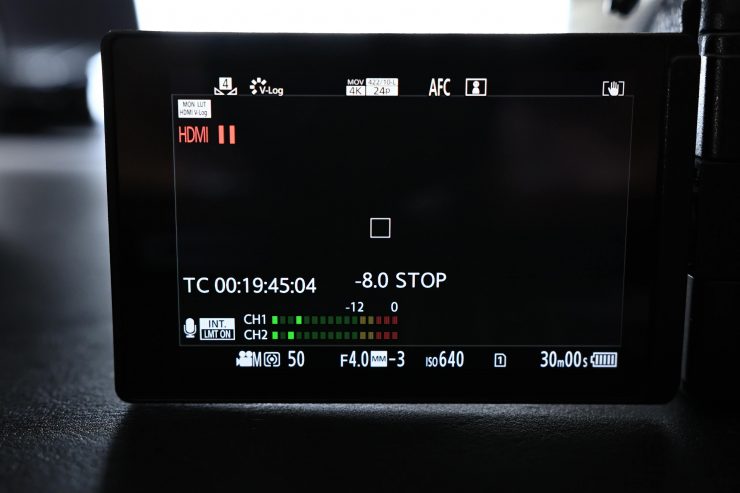
The 30min recording limitation 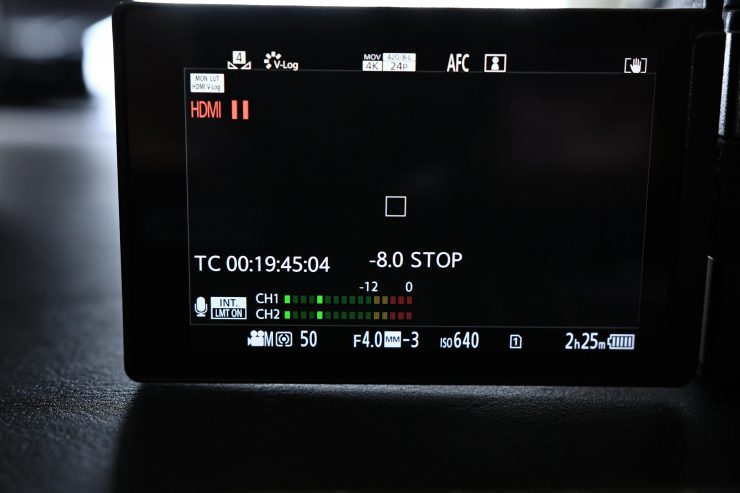
Record limitation only based on the capacity of your card
The S5 does have some recording limitations. Here are the limitations and the shooting modes:
- UHD 4:2:0 10-bit up to 59.94p 30 minutes
- UHD 4:2:0 8-bit up to 59.94p 30 minutes
- UHD 4:2:2 10-bit up to 29.97p 30 minutes
- Anamorphic (3328 x 2496) in 4:2:2 10-bit up to 29.98p 30 minutes
What modes can you continually record in?
- UHD 4:2:0 8-bit up to 29.98p
- Anamorphic (3328 x 2496) 4:2:0 8-bit up to 29.98p
- HD 4:2:2 10-bit 50p or 59.94p
- HD 4:2:0 8-bit 50p or 59.94p
- HD 4:2:2 10-bit up to 29.98p
- HD 4:2:0 8-bit up to 29.98p
RAW Recording
Just like its big brother the S1H, the S5 will be able to output a 5.9K RAW signal that will be able to be recorded to a compatible Atomos device in ProRes RAW. Now, this won’t be available at launch. You will have to wait until December when Panasonic and Atomos release firmware updates for the camera.
This is what will be able to be recorded:
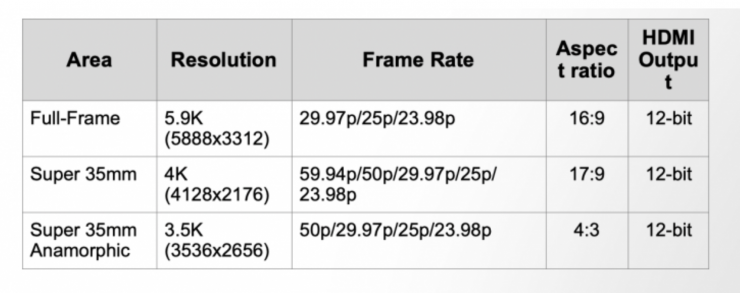
As far as I know, this is the only sub $2,000 USD full-frame camera that will have the capability to record 5.9K RAW (over HDMI externally). I am surprised that Panasonic has allowed 5.9K RAW recording from the S5. This certainly does mean that the camera is slightly stepping on the toes of the much more expensive S1H.
Apple ProRes RAW can be recorded on Atomos Ninja V. V-Log or Rec.709 is selectable on Live View monitor during RAW output.
Shooting assist functions including WFM (Wave Form Monitor), Vector Scope, Luminance Spot Meter, Zebra Pattern can be used during RAW output.
A LUT (Lookup table) exclusively designed for RAW video recorded on NINJA V is available from: https://panasonic.jp/support/global/cs/dsc/download/lut/s1h_raw_lut/index.html.
This LUT will allow you to match the color grading with V-Log/V-Gamut2. Using this new LUT, you can match colors between the footage recorded with Panasonic Varicam, EVA1, S1H, and GH5 series cameras to combine them.
This future firmware release will also give the S5 the following abilities:
- Support for C4K Video Recording
- Support for Video Assist Function
- Vector scope display, Master Pedestal Adjustment, SS/Gain Operation (SEC/ISO, ANGLE/ISO, SEC/dB)
- Add a new photo style: L.MonochromeS, L.ClassicNeo
What about the heat?
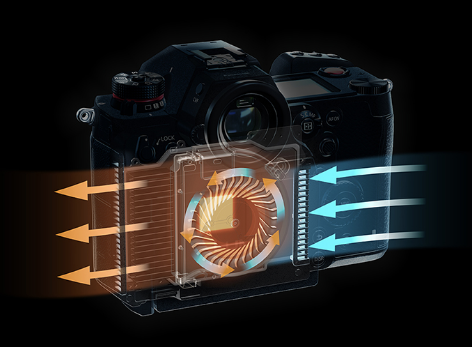
Full frame mirrorless cameras recording 4K and higher resolution video generate a lot of heat. Unlike digital cinema cameras that have large cooling systems and vents to dissipate the heat, mirrorless cameras are weather sealed. This means that there is nowhere for the heat to escape. A lot of full-frame mirrorless cameras suffer from overheating problems when they are recording video.
Unlike the S1H which utilizes a fan, the smaller sized S5 isn’t going to be able to dissipate heat nearly as well. That is why there are recording limitations for the S5. Panasonic does a lot of testing with its mirrorless hybrids, and they told me that they need to be able to run continuously without any issues in 40°C (104°F) temperatures. Hence, this is why Panasonic has set record limitations in some of the recording modes at 30 minutes. Could the camera run for longer, of course, it could. One of the reasons some products have limitations is usually to do with reliability. You could take a normal consumer car and reprogram the computer to make it go faster, but that will affect reliability, fuel efficiency, and the lifespan of that engine and its components. Cameras are no different. I’m sure Panasonic and any other camera manufacturer could put higher recording frame rates and longer recording times in their cameras, but that could result in some serious caveats.
In saying that, cameras from a lot of manufacturers for many years have been artificially limited in their capabilities, mainly because of market segmentation. If you are offering several models at different price points then the manufacturer will inevitably not include, or limit some forms of functionality in the camera. Any manufacturer has the right to do this. Whether a camera can do more than it is actually capable of is irrelevant. If a manufacturer chooses to limit the capabilities or performance of a camera that is there choice. As a consumer, you may not be happy about this, but nobody forces anyone to buy a camera. If you don’t like what a certain manufacturer has done then don’t give them your money.
The S5 like most full-frame mirrorless hybrid cameras is not going to be immune from heat warnings. The manual for the S5 clearly states:
If the temperature of the camera rises a temperature icon will be displayed. Recording may stop, and some functions may become unavailable temporarily. Wait until the camera cools down.
I decided to do a test so I left the S5 outside in direct sunlight on a 36°C/ 96.8°F day recording UHD 4:2:2 10-bit continuously with the continuous autofocus on, the IBIS on, and the LCD screen on. I wanted to see if and when an overheating warning came on.
After being in the hot sun for 19 minutes and 45 seconds the temperature icon came on and it did stop recording. I couldn’t even pick the camera up as the outside of it was so hot.
Once I took the camera back indoors I could press record straight away and it started recording again. There wasn’t any downtime, but after I hit record again I got about 8 minutes and 30 seconds before the overheating warning came back on. The camera kept recording even with the warning on the screen until the 30-minute recording limitation was reached. Once it stopped recording the temperature warning turned off. The thing to clearly remember here is that the recommended operating temperature is listed at 0 C to 40 C (32 F to 104 F). Although the ambient air temperature during my test was 36 C, the actual temperature on the ground where the camera was sitting was well above 45 C.
This was a fairly extreme test, although some people may well actually use the camera in very hot conditions. You should always be aware of the limitations of your camera and what conditions it will work in.
No weather-sealed full-frame mirrorless hybrid is going to be immune from heat issues, period. There is a reason the S1H has a fan inside of it! If you don’t add a proper cooling system to any camera you are going to run into issues. If you want a camera that won’t overheat buy an S1H or a digital cinema camera, end of story.
Dual Native ISO
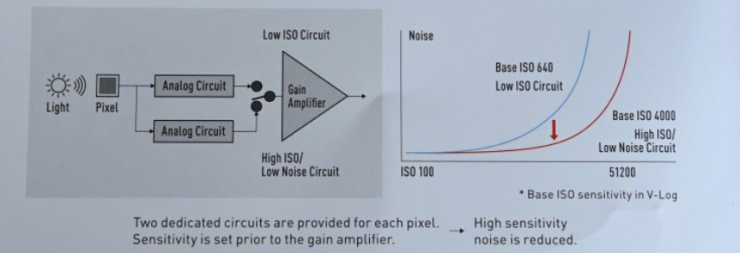
Just like the S1H, the S5 has a dual native ISO. The S5s Dual Native ISOs are 640 and 4000 when shooting in V-Log. Normally noise increases as sensitivity rises with a single native ISO image sensor. However, the image sensor with Dual Native ISO in the S5 is claimed to minimize noise generation by choosing the optimum circuit to use before gain processing, according to the ISO sensitivity that is set.
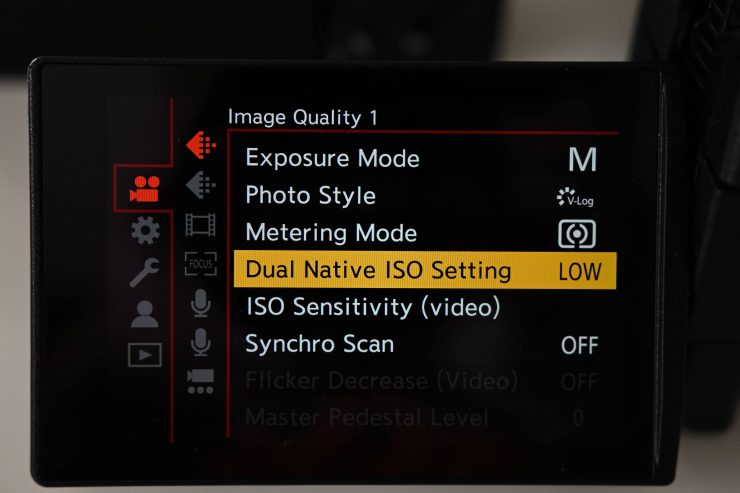
This Dual Native ISO feature cannot be switched manually between LOW and HIGH like on the S1H. It only automatically switches between the two at various ISO levels.
Now, the Dual Native ISOs do change depending on what profile you are shooting in:
- Normal picture profiles: 100 and 640 ISO
- V-Log: 640 and 4000 ISO
- HLG: 400 and 2500 ISO
- Cinelike D2/V2: 200 and 1250 ISO
One thing to note is that there currently isn’t any way of changing the shutter speed from angle to degrees like you can on the S1H. You can only display shutter speed on the S5. This will be fixed in a future firmware update.
Picture Profiles
On the S5 you can choose to shoot in the following picture profiles:
- Standard
- Vivid
- Natural
- Flat
- Landscape
- Portrait
- Monochrome
- L.Monochrome
- L.Monochrome D
- Cinelike D2 (gamma curve that gives priority to dynamic range)
- Cinelike V2 (gamma curve that gives priority to contrast)
- Like709 (mimics a Rec.709 gamma curve)
- V-Log
- Like2100(HLG)
- MyPHOTO STYLE
You can make adjustments to certain parameters once you choose a picture style. With V-Log and Like2100(HLG) you can’t change as many parameters for obvious reasons.
Cinelike D2, Cinelike V2, and Like709 are all good options if you don’t want to record in V-Log.
V-Log/V-Gamut
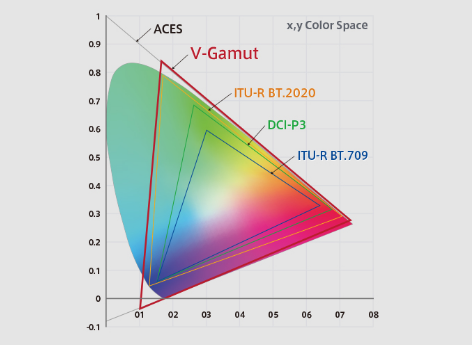
Unlike with the S1, the S5 has V-Log/V-Gamut included as standard. With the S1, if you wanted V-Log, and the ability to record 4K60 video with 4:2:2 10-bit sampling to an external recorder over HDMI, as well as being able to internal 4K30/24 video recording with 4:2:2 10-bit sampling, you needed to purchase the Lumix S1 Filmmaker V-Log Upgrade Software Key for $199 USD.
According to Panasonic, the S5’s recorded footage is compatible with V-Log footage recorded by VariCam or V-Log L footage recorded by other LUMIX cameras such as the GH5/GH5S, S1H, and S1.
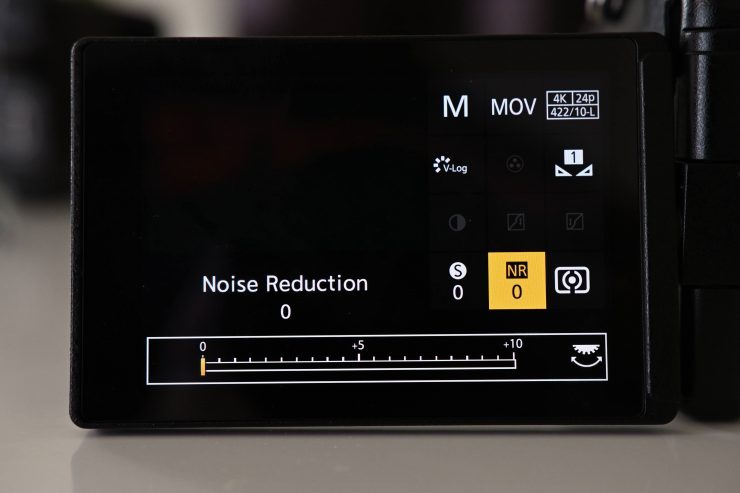
S5 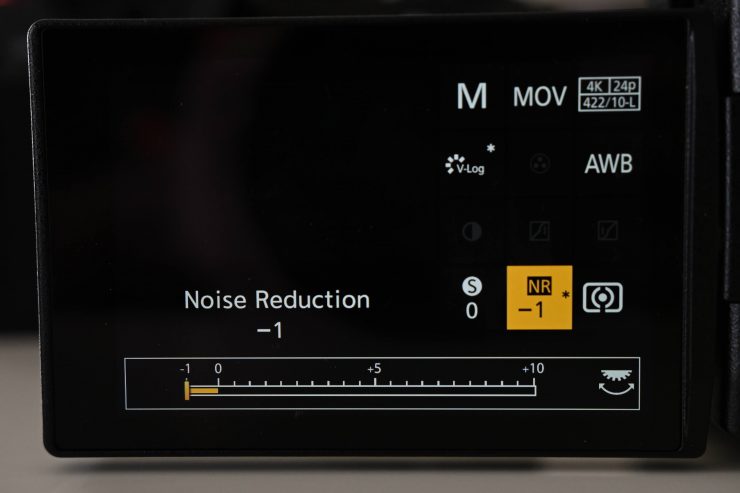
S1H
Now, one thing to note, you can’t turn Noise Reduction to -1 when shooting in V-Log on the S5, like you can on the S1H. On the S5 the lowest you can set Noise Reduction to is 0. Maybe this will change in the future.
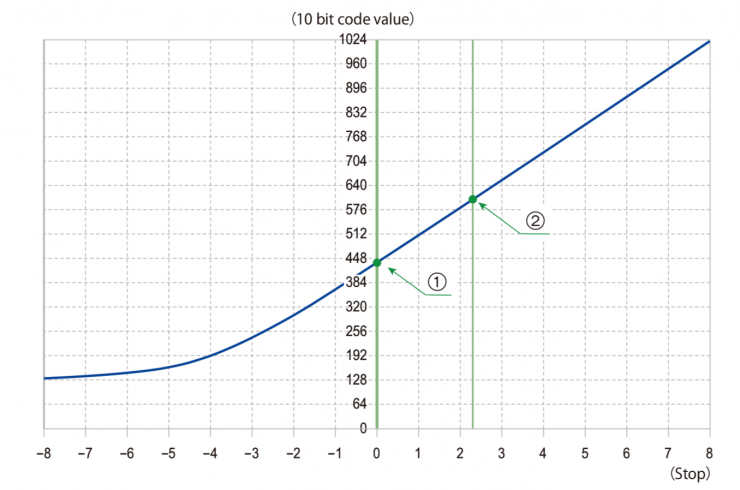
The [V-Log] curve characteristics comply with “V-Log/V-Gamut REFERENCE MANUAL Rev.1.0”. When set to [V-Log], the standard exposure when grey with a reflectance ratio of 18% is imaged is IRE 42%.

It’s nice to see that Panasonic has included V-Log/V-Gamut in S5 and not made it a paid option.
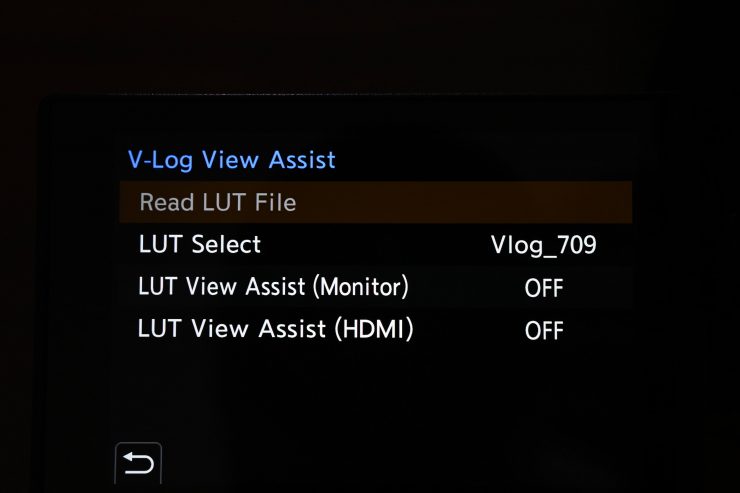
V-Log View Assist is also available on the S5. V-Log View Assist means you can show images with a LUT applied on the monitor/viewfinder and also output that via HDMI.
Above you can see the options that are available when using V-Log View Assist.
There is also a couple of view assist options if you are shooting in HLG.
I’m not the biggest fan of the V-Log to 709 LUT. In my personal opinion, it just doesn’t look good and makes everything way too magenta for my liking. Skin tones don’t look good if you are shooting in V-Log and then just using the LUT.
Luminance Level
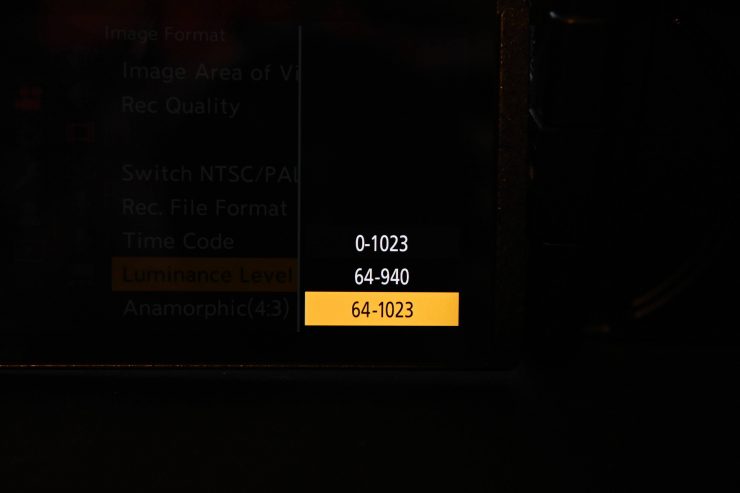
On the S5 Panasonic gives you the ability to assign the luminous range when recording video. When shooting in any of the 8-bit codecs you can choose to set the luminous range at:
- 0-255
- 16-235
- 16-255
Now, the luminance range settings will change themselves if you are shooting in any of the 10-bit codecs. Instead of the above, you can choose to set them at:
- 0-1023
- 64-940
- 64-1023
In V-Log you can’t adjust the luminous range. It is preset at 0-255 when shooting in an 8-bit codec and 0-1023 when shooting in a 10-bit codec.
Codecs
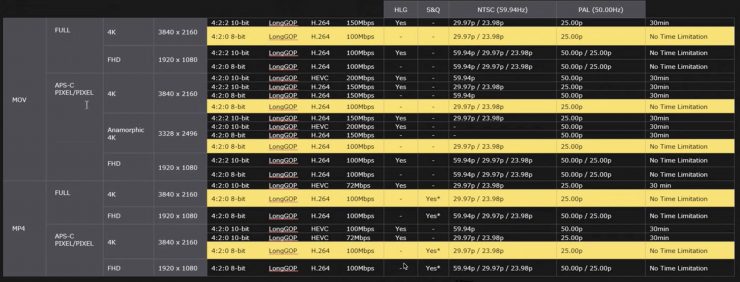
Now, there is always going to be a catch with a sub $2,000 USD hybrid mirrorless camera. With the S5 you can only record in Long GOP, there are no ALL-I modes like on the S1H. In saying that, the bit depth and color space are a lot more important than the difference between Long GOP and ALL-I.
You can choose between H.264 or HEVC depending on the resolution and frame rate.
The highest bitrate available on the camera is 200 Mbps and that is when you are shooting 3840 x 2160 59.94p 4:2:0 10-bit. You have to be in the APS-C or Pixel/Pixel mode to do this.
UHD up to 30p in 4:2:2 10-bit is recorded in H.264 at 150 Mbps. In comparison, the S1H records UHD at 400Mbps (4:2:2 10-bit ALL-Intra).
So how do the codecs compare to the direct competition? Below you can see:
| Codec* | Bitrate | |
| Pansonic S5 | UHD (up to 30p): 4:2:2 10-bit AVC ** (up to 59.94p): 4:2:0 8-bit AVC UHD (up to 59.94p): 4:2:0 10-bit HEVC UHD** (up to 59.94p) 4:2:0 10-bit MP4 Anamorphic 4K** (up to 29.98p): 4:2:2 10-bit AVC Anamorphic 4K** (up to 29.98p): 4:2:2 10-bit AVC Anamorphic 4K** (50p): 4:2:0 10-bit HEVC HD (up to 59.94p): 4:2:2 10-bit AVC HD** (up to 180fps): 4:2:0 8-bit AVC | 150Mbps 150Mbps 200Mbps 100Mbps 150Mbps 200Mbps 100Mbps 100Mbps 100Mbps |
| Canon EOS R | UHD** (up to 29.98p): 4:2:0 8-bit ALL-I HD (up to 29.98p): 4:2:0 8-bit ALL-I HD (up to 59.94p): 4:2:0 8-bit ALL-I | 480 Mbps 90 Mbps 180 Mbps |
| Nikon Z6 | UHD (up to 29.98p): 4:2:0 8-bit MP4 HD (up to 29.98p): 4:2:0 8-bit MP4 HD (up to 59.94p): 4:2:0 8-bit MP4 HD** (up to 119.88fps): 4:2:0 8-bit MP4 | 144 Mbps 28 Mbps 56 Mbps 36 Mbps |
| Sony a7 III | UHD (up to 29.98p): 4:2:0 8-bit XAVC S HD (up to 29.98p): 4:2:0 8-bit XAVC S HD (up to 59.98p): 4:2:0 8-bit XAVC S HD** (up to 119.98fps): 4:2:0 8-bit XAVC S | 100 Mbps 50 Mbps 50 Mbps 100 Mpbs |
*Highest available codec option on the camera
** APS-C Crop only
What does it record to?
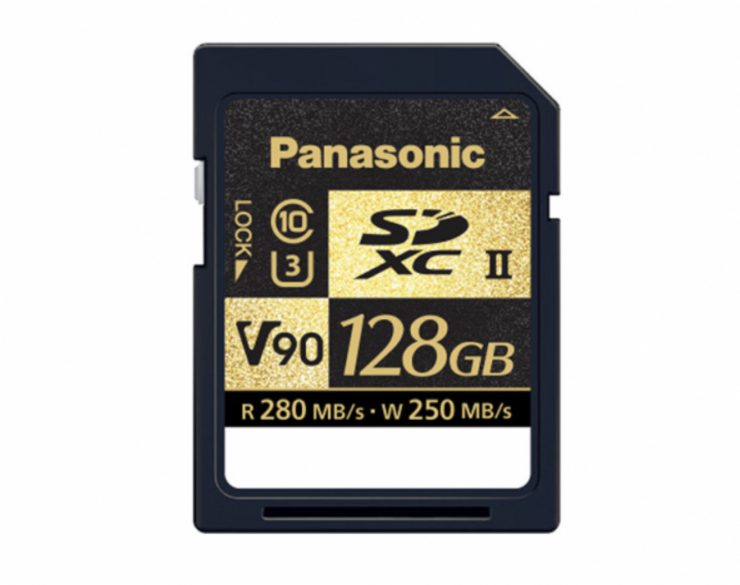
The S5 features dual SD card slots. Card slot 1 is compatible with UHS-I/UHS-II cards. Card slot 2 is only compatible with UHS-I cards.
You can select how the dual card slots work. Here is how you can set them up:
| Relay Rec | Recording transitions from one card to the next once the first card becomes full |
| Backup Rec | Records the same footage to both cards simultaneously |
| Allocation Rec | Allows you to specify what images get recorded to what card. For example, stills to one card, videos to another etc. |
What can it output over HDMI?
The S5 can output 4K 4:2:2 10-bit at up to 60p over HDMI. If you are outputting 4K 4:2:2 10-bit up to 30p over HDMI you can still simultaneously record in camera. If you want to record 4K 60p over HDMI you can still internally record 4:2:0 10-bit or 4:2:0 8-bit, however, you need to have the HDMI 4K 60p/ bit mode set to 4:2:0 8-bit. This also limits the signal being outputted over HDMI to UHD 4:2:0 8-bit.
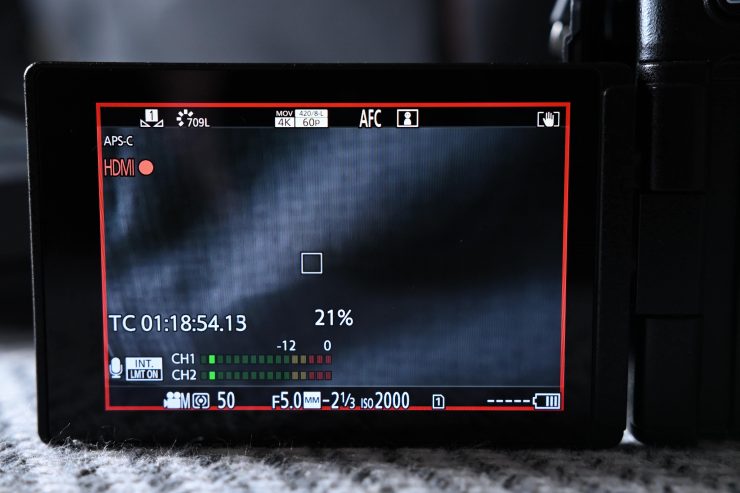
If you want to record UHD 50p or 59.94p 4:2:2 10-bit over HDMI then you can’t record internally at the same time on the camera. Now, there is a caveat here. On your S5 if you have the Red Record indicator box turned on it will turn red once you hit record and you will also see the timecode moving, however, nothing is being recorded internally. This could potentially trip people up who think they are recording when they actually aren’t.
You can choose to output the camera’s information over HDMI so you can see menus and replicate the rear LCD screen. This is handy if you are just using an external monitor for display purposes only.
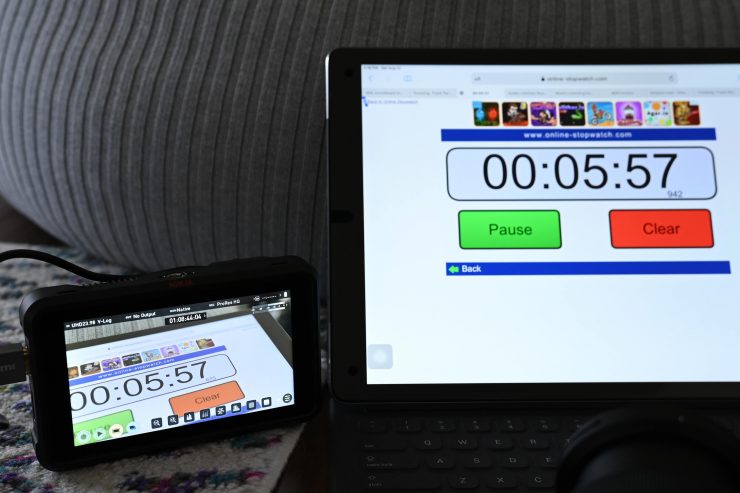
What you need to be very mindful of when using Panasonic Lumix S series cameras, and this includes the S5, is that the HDMI delay is horrible. I did a series of tests to work out the average delay when outputting over HDMI. The average latency taken from 3 tests was a whopping 221ms.
What do these figures actually mean? Well, anything below 100ms is considered to be low, because most humans don’t perceive a delay that small. Once you get over 100ms we perceive a noticeable delay. The delay over HDMI from Panasonic cameras is far worse than most other mirrorless hybrid cameras on the market. Depending on what you are doing with the S5, this delay could be a problem for you.
Video Quality
In a lot of ways, the S5 is a mini S1H. Even though Panasonic won’t officially say this, it uses the exact same sensor as the S1H. On the S5 you are going to get pretty similar image quality as you will get on the much more expensive S1H. No, you don’t get 5.9K recording internally, unlimited recording times, or the ability to record in ALL-I codecs, but it is still a very capable camera when recording in UHD or HD.
I didn’t get to shoot as much as I would like due to day job commitments, but I did find the S5 to offer results that were pretty similar to those of the S1H.
The quality from the Long GOP 4:2:2 10-bit recording, despite not having a large bitrate is really nice. The S5 is still very capable of capturing rich, detailed images. Above you can see a quick test where I compare UHD 4:2:2 10-bit full-frame and APS-C recordings.
I also compared the 4:2:2 10-bit recording to 4:2:0 8-bit. Now, the 4:2:2 10-bit is a little sharper and more detailed, but there isn’t a massive difference between the two in a test like this. Where you will notice the difference is if you are shooting scenes with lots of information and movement where the codec has to work a lot harder. You also can’t pull a 4:2:0 8-bit image around in post as much as a 4:2:2 10-bit image. If you are going to shoot 4:2:0 8-bit then don’t shoot in V-Log and make sure you get your white balance and exposure right when you are shooting.
A lot of people like to rubbish 4:2:0 8-bit codecs, but in the right shooting conditions if you get it right when you are shooting you can obtain good results. Just don’t shoot in V-Log when recording in 4:2:0 8-bit.
The UHD 4:2:0 10-bit 59.94p material looks good. It is nice and sharp and despite only being able to shoot in the APS-C crop mode I think a lot of people will be happy just to have the ability to shoot UHD 60p internally in a sub $2000 USD camera.
Dynamic range
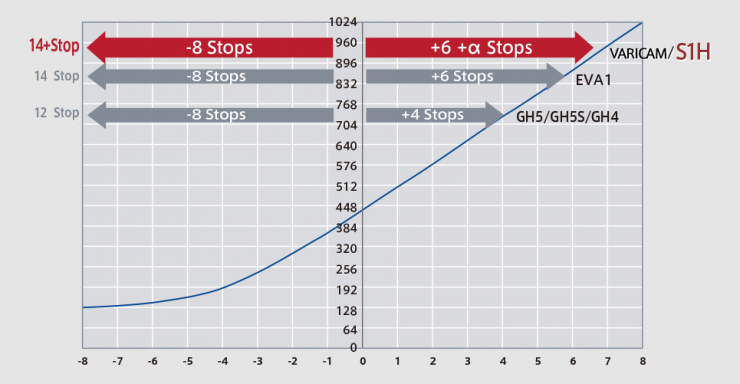
While the camera has a good amount of dynamic range, out of the claimed 14 stops, 8 of those are below middle grey. This claimed dynamic range is the same as the claimed dynamic range of the S1H, Varicam LT, Varicam 35, and EVA1.
There is absolutely nothing wrong with doing scientific dynamic range tests, however, I am more interested to see how that dynamic range translates to real-world shooting conditions. The amount of stops a camera has doesn’t mean anything, especially if the highlight handling of the camera isn’t great. The S5 may well have 13-14 stops of dynamic range, but it doesn’t roll off highlights that smoothly, and it hard clips them before you get anywhere near 100 IRE. Despite the highlight roll-off being quite aggressive on scopes, when looking at actual real-world images it isn’t nearly as bad as the scopes indicate.
The overall dynamic range of the S5 is still pretty good and if you can’t work with the DR the camera has you are doing something very wrong. All modern-day cameras have a pretty decent dynamic range. From looking at the S5 and S1H side-by-side I found the dynamic range to be virtually identical. If you want to find out more check out my review of the S1H.
Accurate Colors?
You hear people talking about color science all the time, but in my opinion, color science is really only applicable or debatable when you are not shooting Log or RAW. If you are someone who needs a camera where they just want to turn material around quickly or hand it off to someone who won’t be grading it, then choose a camera that you think looks good when you are shooting in a regular picture profile. The S5 will give you a nice looking image shooting directly in the L709 or some of the other standard picture profiles.
It is fairly easy for any camera to reproduce a single color (for example a blue sky) but where it is a lot more challenging to reproduce lots of different colors accurately at the same time.
Generally, I don’t mind the look of the S5. Colors look fairly nice and neutral. I found like most Panasonic cameras, the S5 is a little on the warm side with a slight push towards magenta.
Color accuracy is a hard one to judge as both lenses and lighting will play a factor in how color is perceived.
Above you can see what the various picture profiles look like. For all of these shots the aperture, white balance, and ISO are exactly the same. This is so you can see the differences between the profiles.
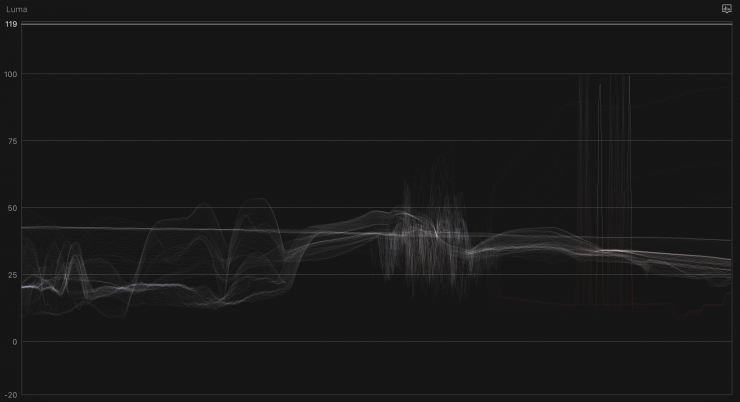
V-Log 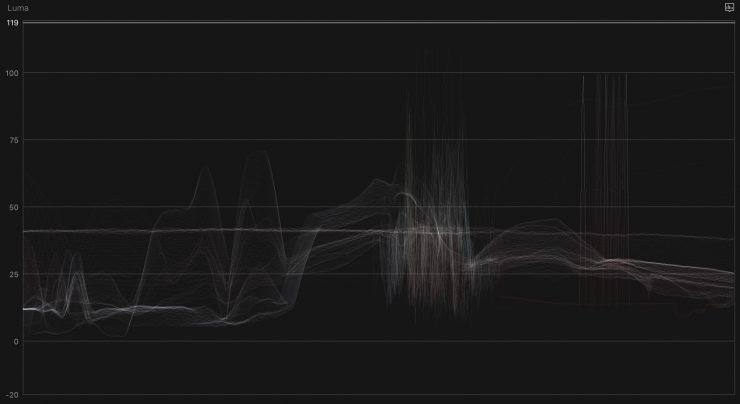
L709 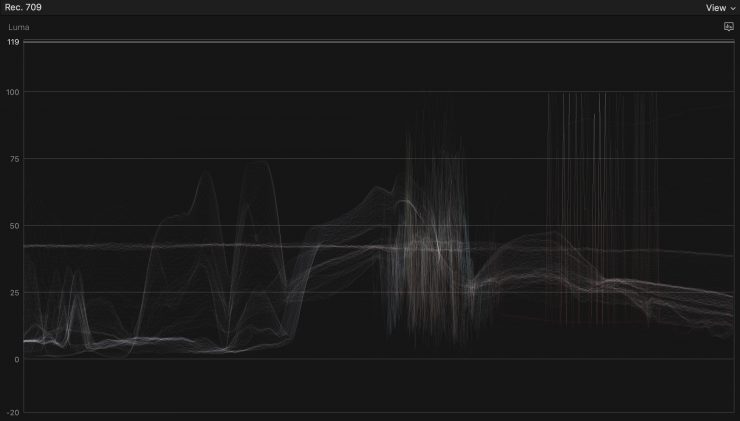
Cinelike V2 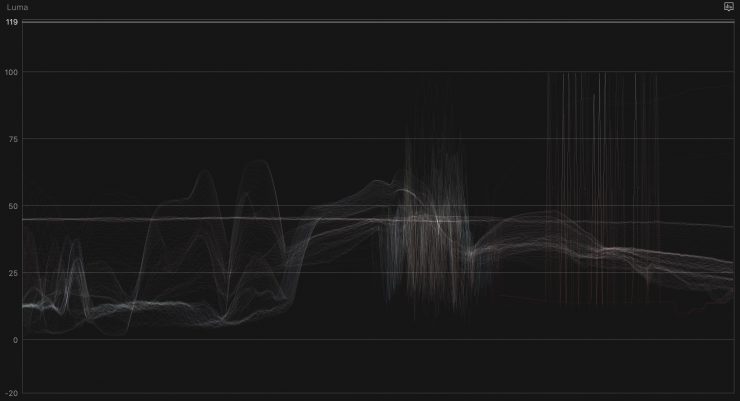
Cinelike D2 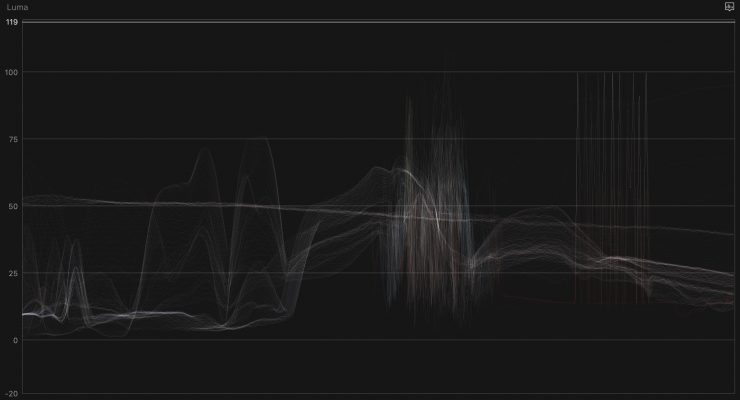
Portrait 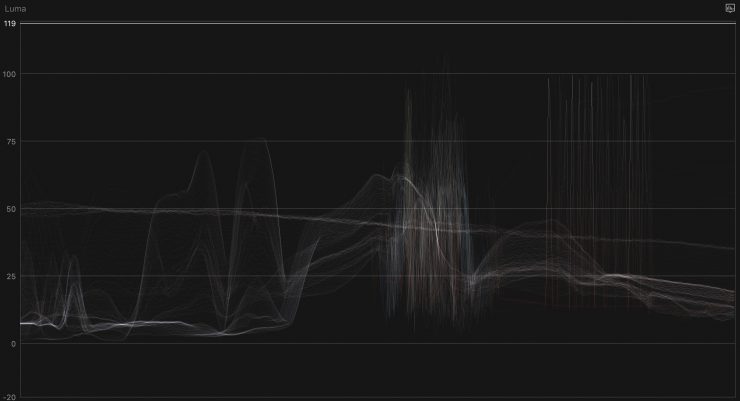
Landscape 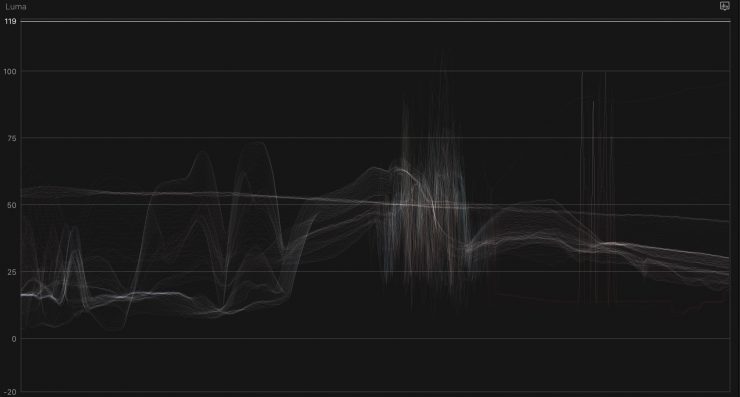
Flat 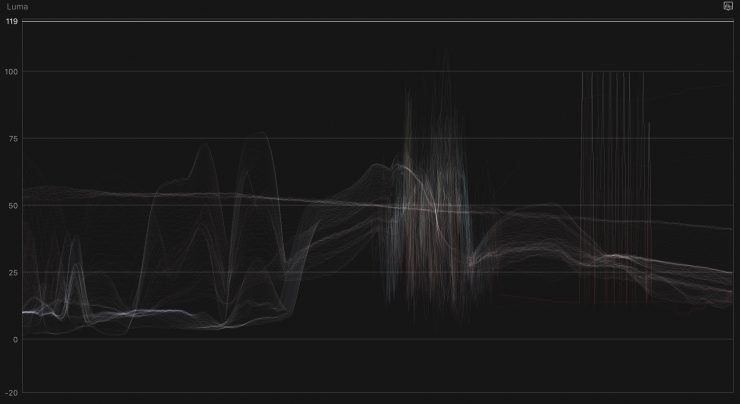
Natural 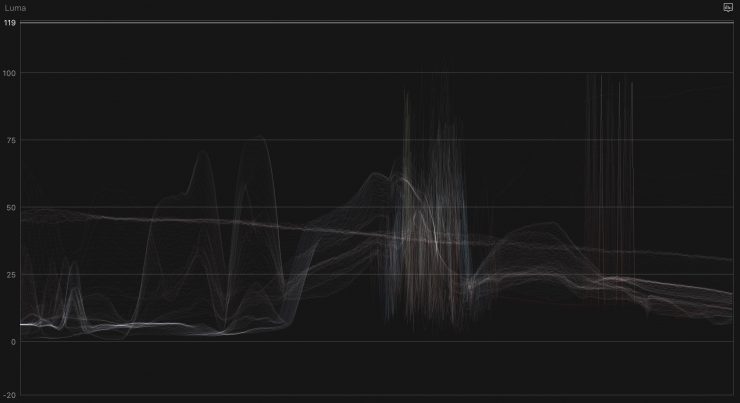
Vivid 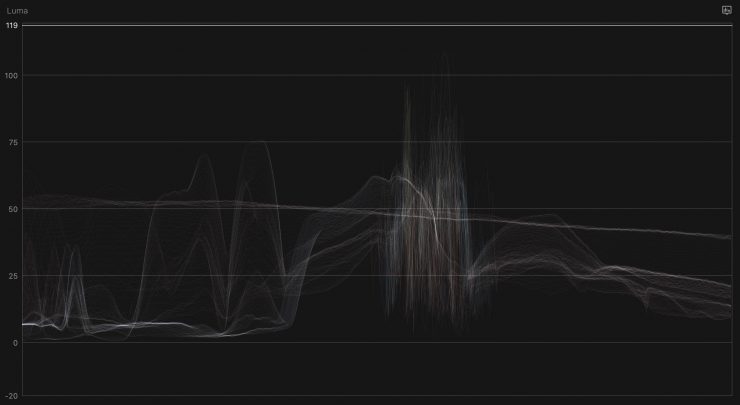
Standard 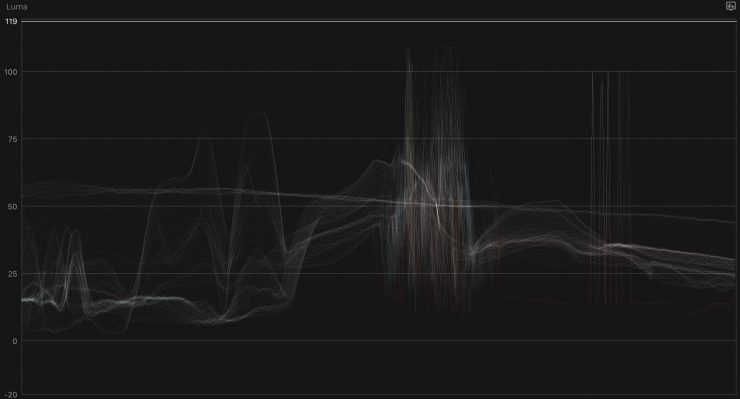
HLG (converted for SDR display)
Above you can see how the various picture profiles alter characteristics on the waveform.
Out of the box, the colors the S5 produces are pretty accurate if you use picture profiles other than V-log. I personally find that V-Log does require a little work to get colors accurate.
If you are shooting V-log you will notice that just like the S1H, the S5 does have a tendency to display reds as orange. Above you can see an image that was shot in V-log and a proper white balance was done. I have just graded it without touching any of the colors. The colors on the robot that appear to be orange are actually supposed to be red. The scopes aren’t indicating any particular color push in any direction. This is relatively easy to fix, but it is something you should be aware of if you haven’t shot V-Log before.
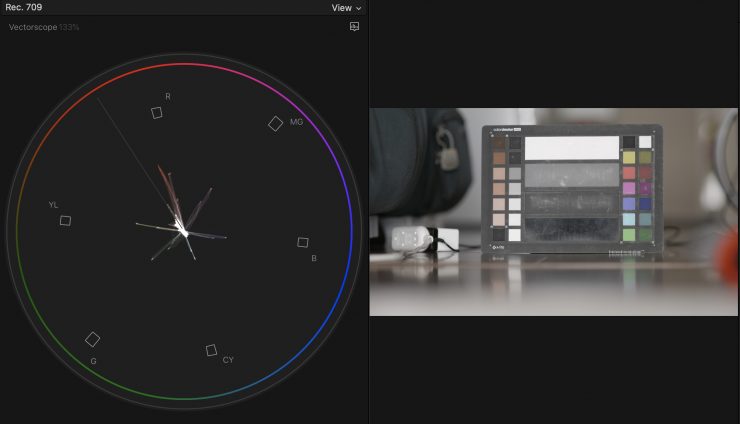
V-Log 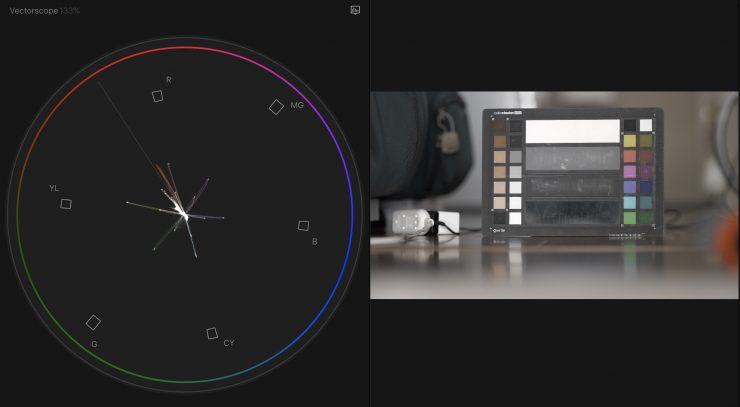
L709
When you shoot in V-Log everything pushes slightly towards magenta. Above you can see the difference on a vectorscope when shooting in V-Log as opposed to L709.
If you would like to see what the Panasonic S5, Canon EOS R, Sony a7 III, and Nikon Z6 look like using non LOG picture profiles under the exact same lighting conditions you can in the clip above. The same lens was used on all cameras and each camera was individually white-balanced under both 3200K and 5600K lighting conditions. Flat or Neutral picture profiles were used on all of the cameras. This is just to give you an idea of the differences between the various cameras when you are shooting in non LOG picture profiles. None of these images have been touched at all, this is exactly what they look like using those picture profiles after being white-balanced.
Of course, all of these clips could be adjusted in post to look better. This is simply to show you how baked in picture profiles look and the different ways they replicate color and skin tones. I did a 60-second grade on the 5600K clips just to show you that you can get all of the cameras to match reasonably well with not too much effort.
Now, I did come across a strange anomaly where I was seeing some blue channel chroma bleeding once highlights started to clip. Above you can see it in the image to the left-hand side of my head. On the RGB parade, you can also see where it appears. Even after hard clipping has occurred there is definitely blue chroma bleeding happening. I didn’t see this happen that often and maybe this is just a bug due to the camera being a pre-production version.
S&Q Quality
The quality of the material captured in S&Q is not bad, but it isn’t great either. You can record up to 180fps in HD. It is still usable if you utilize a nice sharp lens and you don’t start trying to push the ISO. Like any camera, it is only going to be as good as the optics you place on the front of it.
What you need to factor in is that angle of view narrows if you select a frame rate that is over 151fps.
HFR material is certainly very usable at lower ISOs, although it isn’t as sharp as when you are shooting in other modes and it does show a lot more noise. In fact, Panasonic’s own manual for the S5 states: When set to a frame rate exceeding 60 fps, there may be some deterioration in recording quality.
Above you can see a few tests I did shooting HD at 150fps and 180fps. They are noticeably softer than non S&Q modes.
At 60fps the material looks good and there is no real noticeable increase in noise or decrease in image quality. It’s when you go above 60fps where you will notice more noise and a decrease in sharpness.
I wouldn’t use HFR recording in low light situations where you have to increase the ISO. At high ISO setting in V-Log high frame rate shots do not look good. If you go over 150fps then the noise levels get even worse.
Low Light Performance
As I have already mentioned, the S5 utilizes the same dual native ISO technology that can be found in the S1H, but you can’t manually change it between Low and High settings.
So how does the camera perform when you start increasing the ISO? I was reasonably impressed by the ISO performance of the S5. ISO performance can be hard to quantify as it really depends on what conditions you are shooting in. If you are shooting in conditions where everything in your scene is dark, you will, of course, see more noise. If a good proportion of your scene can be exposed correctly, then the noise levels are less distracting, even when shooting at higher ISO levels.
I personally don’t like shooting anything above 5000 ISO regardless of the camera I am using. But depending on the type of work you are doing you may find yourself having to push ISO levels to get that shot that couldn’t otherwise be captured.
You can adjust the amount of noise reduction being used regardless of what picture profile you are using. In V-Log it is set at the lowest default level of 0. You can adjust it up to +10. On all the other picture profiles it also defaults at 0, but you can adjust it from -5 to +5.
I would use the noise reduction very carefully if you plan on having it on. Even Panasonic clearly states that Increasing the effect may result in a slight drop in picture resolution. In my opinion, you are much better off doing your noise reduction in post unless you have to turn your material around very quickly.
V-Log material does clean up quite nicely with a bit of noise reduction. If you don’t want to look at all the tests, I’ll sum it up by saying that the S5 is a pretty impressive low light camera. While it may not be the best low light full-frame camera going around, it is going to be good enough for most people’s needs.
For these tests I didn’t want to shoot completely dark scenes, instead, I wanted to see what the noise looked like when you could still obtain a reasonable exposure at around 4000/5000 ISO. In the below test, you can see what the noise looks like on black, grey, colors, dark and light objects. As far as I am concerned, if you are shooting in conditions where you are having to run your ISO at really high levels then noise is probably going to be the least of your problems.
In UHD full-frame 4:2:2 10-bit when shooting in the L709 picture profile, I personally found the ISO levels to be very acceptable up to around 8000/10,000 ISO. You could go as high as about 16,800 ISO, after that you will see fixed pattern noise. The level of noise you are comfortable with will always be a personal decision, especially if you plan on using some form of noise reduction in post.
When shooting in V-log you can still obtain decent results once you grade the footage and add a bit of noise reduction in post. If you shoot in the APS-C crop mode the noise levels are still fairly consistent with what you will get when shooting full-frame.
I also did a quick test to compare the S5 against the S1H when recording UHD 4:2:2 10-bit in V-Log as 4000 ISO. Both cameras were set at their minimum noise reduction settings. On the S5 that was 0, and on the S1H that was -1. I was interested to see how the two cameras compared, especially given the fact that you can manually select Low or High ISO on the S1H, while on the S5 it is supposed to automatically switch between the two depending on what ISO you select.
While ungraded V-log material is going to show quite a bit of noise, to my eye the S1H had slightly less noise than the S5 at the same settings. Perhaps this is because of a combination of being able to manually set the dual ISO functionality on the S1H and because it is using an ALL-I codec rather than Long GOP.
It was interesting to see when I added the exact same amount of noise reduction to both clips in post that the images looked pretty similar.
Lens Mount
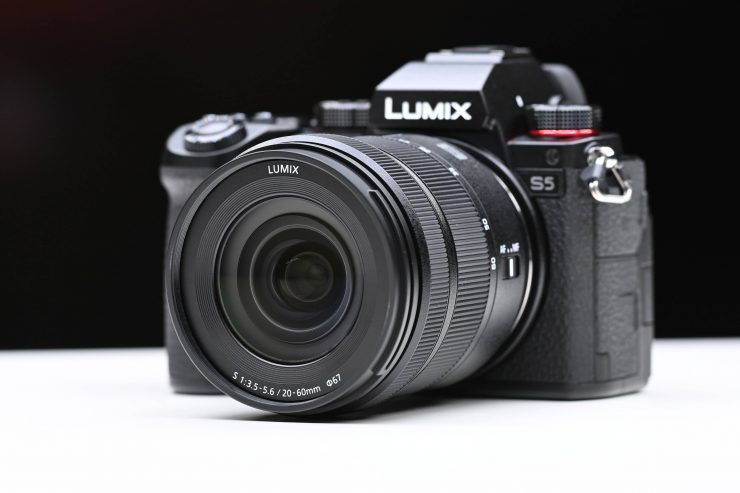
The S5 uses the L Mount. The L Mount is fairly adaptable and there is a range of adaptors you can use to run non-native L Mount lenses if need be.
One of the interesting things I found out from Panasonic is that a large proportion of S1H users weren’t using native L mount glass on their cameras. A lot of people were running cinema glass through the use of adaptors. However, with the S5 aimed at a slightly different audience to the S1H, it will be interesting to see if that trend continues with this camera.
One of the key drawcards of the L Mount is its short flange focal distance. With an inner diameter 51.6 mm and a flange depth of 20.0 mm it allows enough room to place a lens adapter ring between just about any lens and the L Mount.
Below are the flange depths of some other camera systems:
- Nikon Z Mount 16mm
- Fujifilm X-Mount 17.7mm
- Sony E-Mount 18mm
- Canon RF-Mount 20mm
- Leica M-Mount 27.8mm
- Contax G-Mount 29mm
- Canon EF-Mount 44mm
- Nikon F-Mount 46.5mm
Wooden Camera makes a PL to L Mount conversion kit if you want to run cinema glass on your S5. There are also other PL to L Mount Adapter options from a wide range of companies, including Fotodiox, c7 Adapters, Leitz, Kippon, and Sigma.
One of the biggest stumbling blocks for Panasonic in trying to sell any of Lumix S series cameras is the lens choices. Most native L mount glass isn’t particularly cheap, and nobody wants to pay good money for a native lens that doesn’t offer great autofocus when used on a Lumix S series camera. Panasonic also doesn’t offer than many native lenses in L mount. Yes, we are starting to see more third-party lens manufacturers starting to make lenses in L mount, but the range is still fairly limited.
The Lumix S lenses are optically very good, but when combined with Lumix S cameras they don’t provide autofocus performance that is on par with Canon, Sony, or Nikon.
| PRICE | |
| Lumix S 24-105mm f/4 Macro O.I.S. Lens | $1,297.99 USD |
| Lumix S PRO 16-35mm f/4 Lens | $1,497.99 USD |
| Lumix S PRO 24-70mm f/2.8 Lens | $2,197.99 USD |
| Lumix S PRO 70-200mm f/2.8 O.I.S. Lens | $2,597.99 USD |
| Lumix S PRO 70-200mm f/4 O.I.S. Lens | $1,697.99 USD |
| Lumix S PRO 50mm f/1.4 Lens | $2,297.99 USD |
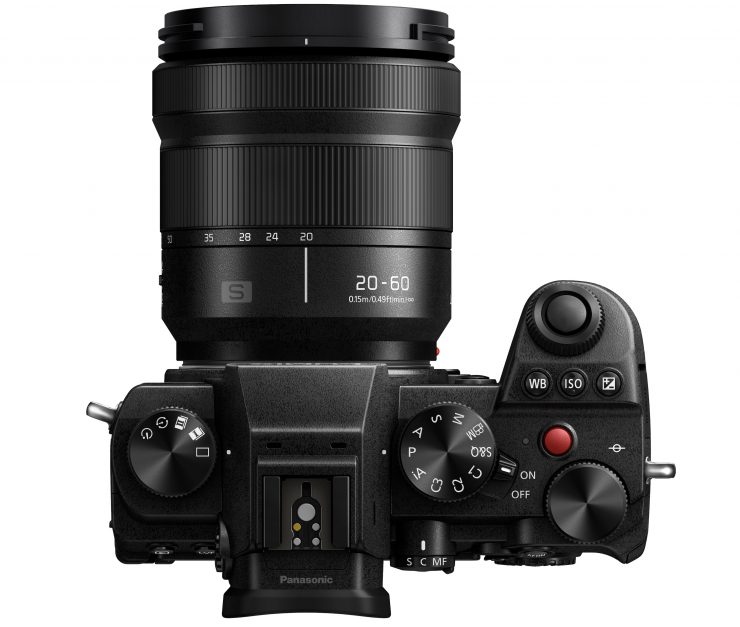
With the S5, Panasonic is making it available as part of a kit with the new Lumix S 20-60mm F3.5-F5.6 lens. This is a lightweight budget full-frame lens. It has a 67mm front filter diameter and it weighs 350g (0.77lbs).
This lens is actually pretty decent for a budget kit lens. The 20-60mm has a close focus ability when used at 20mm of just 15cm (0.49ft) which is impressive.
The lens does extend as you zoom. The only other problem with the lens is that the aperture starts to ramp straight away as soon as you move it off 20mm. At 24mm is already at F3.5, and by 35mm it has reached F4.5. At 50mm it is F5.3.
Given that the S5 with this lens only costs $300 USD more, it is well worth considering.
Autofocus
Let’s address the elephant in the room. Panasonic doesn’t exactly have a good reputation for autofocus performance, especially when it comes to video. The biggest Achilles Heel of the S1H was its autofocus performance. Well, you will be pleased to know that Panasonic has designed an entirely new autofocus system for the S5.
Now, before you get too excited, it is still a contrast-based autofocus system. However, the S5 gets major improvements when it comes to head, face, and eye detection. Panasonic claims it has twice the tracking performance speed of previous systems for face and eye detection. When it comes to human or animal tracking performance they are saying that the performance has been increased by 5x.
Panasonic has improved face detect autofocus when shooting video so now if a subject turns their head the system will still recognize them.
Above you can see some autofocus tests where I tested out the Face/Eye/Body detection. It works pretty well and it is more responsive than the system on the S1H. I purposely used a Lumix S lens wide open and shot the material slightly underexposed to put more strain on the AF system. The system will track multiple heads at once and you can just touch the screen to switch between subjects. If there are two subjects in the frame and one leaves the frame, the focus will shift automatically to the subject that remains. As you can see from the tests, it is far from perfect, and it can get confused, however, it is much better than the previous autofocus systems used on the Lumix S cameras.
Above you can see a quick test comparing the Panasonic S5 and the Canon EOS R with both cameras using continuous autofocus and the head and eye detect are also turned on. Surprisingly the S5 did a pretty good job when compared to the DPAF system of the Canon. While the S5 wasn’t as good at tracking a subject coming straight towards the camera at speed, when following a subject in reasonable lighting conditions it performs pretty well. It does have a tendency to hunt at times and the response isn’t as fast or as smooth as the Canon, but it is a big improvement over previous Lumix S cameras.
The autofocus works reasonably well when conditions are favorable. Once you start trying to use it in low light environments or high contrast conditions it will fall over pretty quickly. As I already mentioned, the continual autofocus does have a tendency to hunt on occasion and this is something you need to be aware of. It performs a lot better in APS-C mode than it does in full frame.
The autofocus is available in all resolutions and frame rates up to 59.94p. In S&Q modes up to 150fps autofocus is available. If you try and shoot over 150fps there is no autofocus available, you can only manually focus.
The autofocus performance does seem to be quite a lot better than the S1H, but in my honest opinion, it hasn’t improved to the point where it is comparable to Sony or Canon. In saying that, it is now at the point where continual autofocus is actually usable (in good lighting conditions), and the Tracking and Face/Eye/Body Detection work pretty well. I would actually use AF on the S5, this is something I wasn’t comfortable doing with the S1H.
Look, I applaud Panasonic for improving it, but as long as the autofocus is still modeled around a contrast-based system it will continue to lag behind a lot of the competition.
Personally I don’t use autofocus when shooting video, but I know a lot of people do. If great autofocus is a primary concern for you when choosing a mirrorless camera, then there are better options than the S5.
Both the S1H and S1 will also be getting the same autofocus performance as the S5 through a future firmware update.
O.I.S & I.B.I.S
The S5 integrates in-body image stabilization (I.B.I.S). Panasonic developed an algorithm that is claimed to precisely calculates shake using information acquired not only from a gyro-sensor but also from the image sensor and an accelerometer sensor within the body of the camera. This is said to enable more accurate shake detection and compensation
By combining the Body I.S. (5-axis) in the camera and the O.I.S. (Optical Image Stabiliser, 2-axis) in the LUMIX S Series lens, the 5-axis Dual I.S. compensates for larger movements than are controllable by conventional methods. Maximizing both O.I.S. and I.B.I.S. is claimed to give users up to 6.5-stops of compensation.
The 5-axis Dual I.S. 2 works for both photo and video modes, including 4K, HD, and anamorphic recording. The Body I.S. compensates for camera movement even when L-Mount lenses without O.I.S. are used and when other lenses are fitted via an adapter
The I.S works really well, it certainly allows you to capture very steady footage when shooting handheld. If you combine a Panasonic lens such as the 24-105mm that has O.I.S with the S5’s in-body image stabilization you can obtain remarkably steady shots when shooting handheld.
With this combination, handheld shots that I did looked like they had been shot using a tripod.
There is also an additional E-Stabilization mode you can activate where camera shake is corrected along with vertical, horizontal, roll, pitch, and yaw axes through the combined uses of in-lens, in-body, and electronic image stabilization.
The biggest downside to using IBIS and OIS is that if you try and do pans or tilts you can get this bad floating effect that makes it hard to do anything smoothly. If you are shooting anything where you are getting lens flare you will also see the flare moving around in an unnatural way. Now, you can change the stabilization operation mode to Normal, Panning (Auto), Panning (Left & right), and Panning (up & Down), but in a lot of situations, you are probably going to forget that you can change it.
There is a slight image crop when you turn on the E-Stabilization (video) mode, but it is fairly minimal. If you just have the Boost I.S (video) activated there is no crop.
I couldn’t find any real noticeable difference between the performance of these systems on the S5 or S1H. The combination of IBIS and a lens with OIS produces very impressive results for keeping handheld shots steady.
Fully Rotatable Screen
Just like most of the Panasonic mirrorless cameras, the S5 comes with a fully articulating and rotatable screen. The screen is 3″ in size, which is slightly smaller than the 3.2″ screens used on the S1H, S1, and S1R.
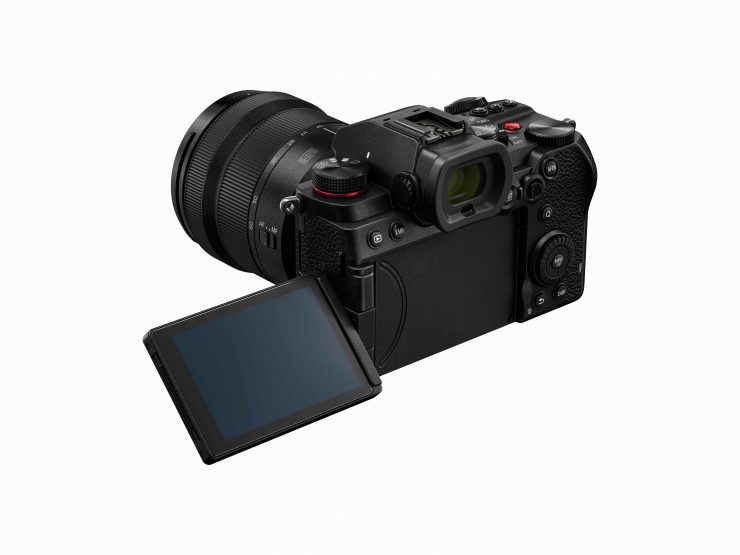
The 3″ fold out monitor is easy enough to use and it offers enough flexibility that I think most users will be happy with its design. The touch screen functionality is responsive and the quality of the screen is pretty good.
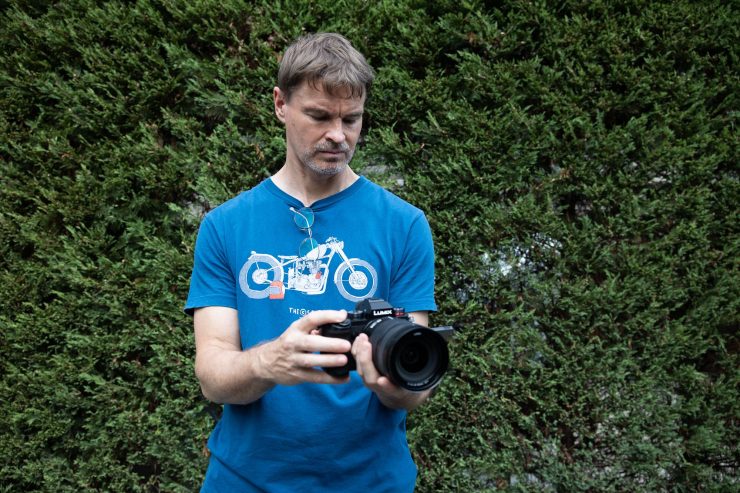
You can actually make the screen very bright and this does make it pretty usable even in very sunny conditions outdoors.
I like that the fold-out monitor can be flipped around and completely hidden away. It means that when you are putting the camera in a bag or transporting it the rear screen won’t get accidentally scratched.
The only trouble with the screen on the S5 is its rotation is limited if you have an HDMI cable plugged into the body of the camera. The screen ends up hitting the HDMI cable. I had the exact same issue when I was reviewing the S1H.
For people who need to film themselves, Panasonic has also included a REC Frame indicator where a red frame outline appears to let you know if you are recording or not. This can be turned on or off.
Viewfinder
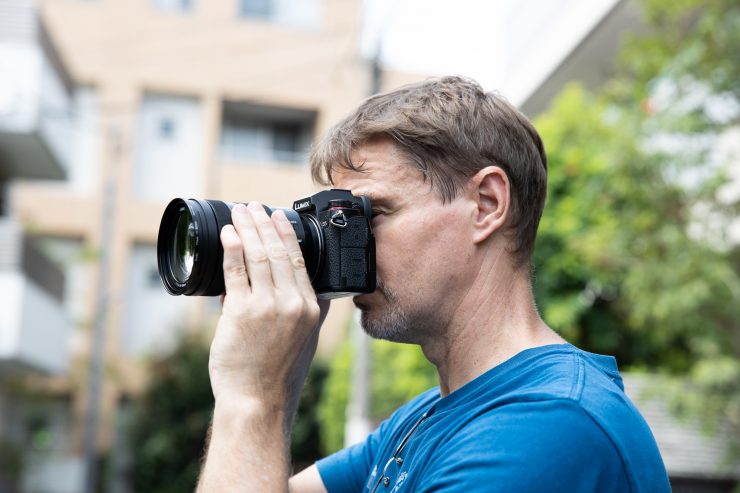
The camera doesn’t use the same Real View Finder as the S1H, S1, or S1R. The S5 viewfinder is an 0.39″ OLED with 2,360,000 dots.
I like that you can press the LVF button on the side of the EVF to turn the rear LCD screen off, or turn the EVF off. I wish Panasonic had have implemented a way to be able to keep both on at the same time and to turn off the EVF proximity sensor.
The rear viewfinder is pretty good, but I don’t think it is quite as good as the one on the S1H.
The problem for me is that even though you have this good viewfinder and rear LCD screen, you can’t punch in to check focus when you are recording. This almost defeats the purpose of having good onboard monitoring.
White Balance
On a lot of mirrorless cameras (I’m especially pointing the finger at Sony here), doing a white balance is far more complicated than it should be.
With the S5 it is quick to do a custom white balance. The camera also has a dedicated white balance button that is easy to access. This allows you to make white balance changes very quickly.
You can store up to 4 custom white balance settings, and there are an additional 4-kelvin color temperature settings you also store.
You can also choose AWB as well as 7 other preset defined white balance settings.
Frame Lines
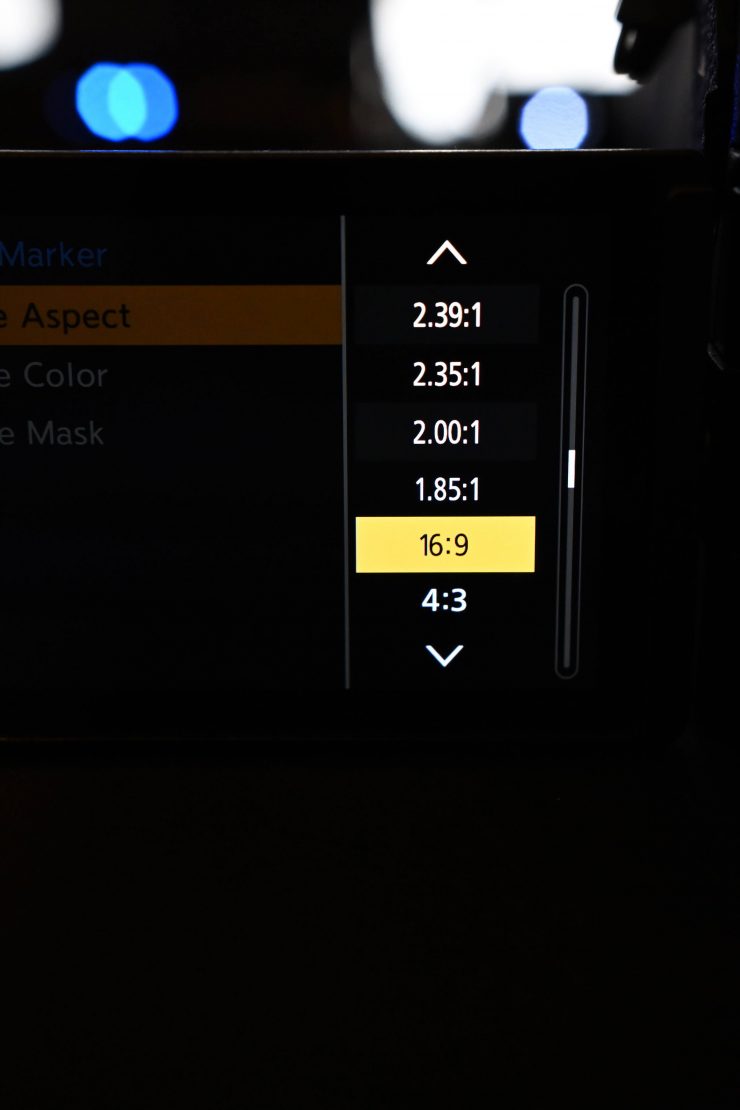
The camera has the ability to generate a wide array of frame markers in different sizes. here is what you can do:
- 2.39:1
- 2.35:1
- 2.00:1
- 1.85:1
- 16:9
- 4:3
- 5:4
- 1:1
- 4:5
- 9:16
What is nice is you can also change the color of the frame marker lines as well as the frame mask. These are features you don’t commonly see on mirrorless hybrids.
Image Area of Video
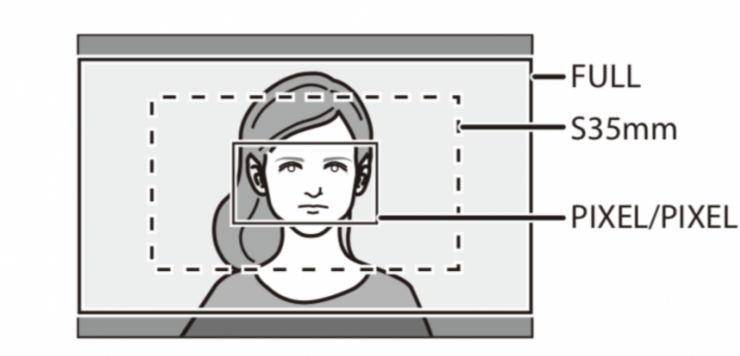
As the S5 utilizes a full-frame sensor you can choose what image area you would like to capture. The angle of view differs depending on the image area. By choosing a different image area you can effectively extend your lenses focal reach without image deterioration.
You can only choose Image Area when recording in various codecs and frame rates. In a lot of the UHD and HD modes, you can choose Full Frame, S35, and Pixel/Pixel.
Where this option is impressive is when you are recording in HD. Here you can select from using Full Frame, S35mm, or Pixel/Pixel. This is very handy as you can use one full-frame zoom lens such as the 24-105mm F4 to shoot just about anything you need. If you are shooting events, news, or even weddings, and you need to deliver in HD, an S5 and 24-105mm F4 full-frame zoom makes for a compelling solution.
If you are shooting in UHD, selecting APS-C or Pixel/Pixel gives you the same result.
The other benefit of pixel to pixel when shooting in HD is that you can get incredibly good macro shots with a standard lens.
I couldn’t see any large difference in image quality when using Full, S35mm, or Pixel/Pixel. The only thing I could see is that the Pixel/Pixel is probably not quite as sharp as the Full Frame or S35mm modes.
Of course, you also can’t choose to shoot using the full view of the sensor if you are using a Super 35 mm/APS-C lens or if you have the Image Circle selected to S35mm.
Live Cropping
On the S5, just like the S1H, you can utilize a function called Live Cropping. What this essentially does is let you capture a zoomed-in view of your image. Above you can see how it works on the S1H. This is exactly how it works on the S5.
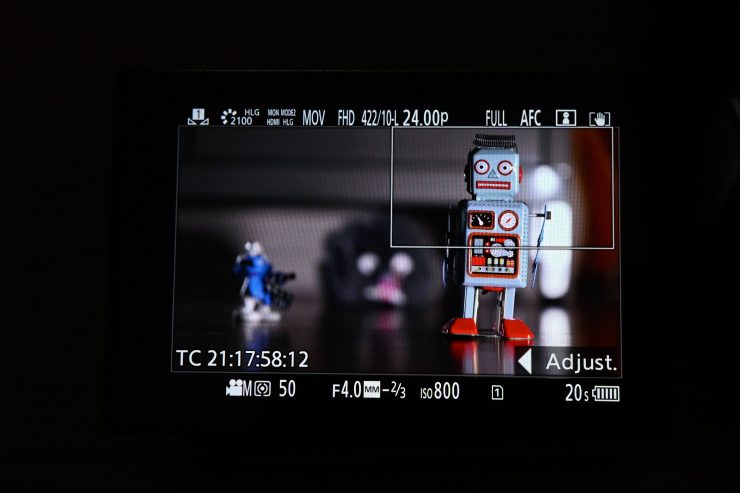
By cropping a part of the image from what is displayed in the live view, you can record FHD video that incorporates panning and zooming as long as the camera stays in a fixed position. You can also just record a frame that doesn’t move.
You need to select a compatible recording mode and format to be able to record Live Cropping. If you have selected a recording format or recording quality where Live Cropping isn’t available, the camera will automatically switch to a recording format that is.
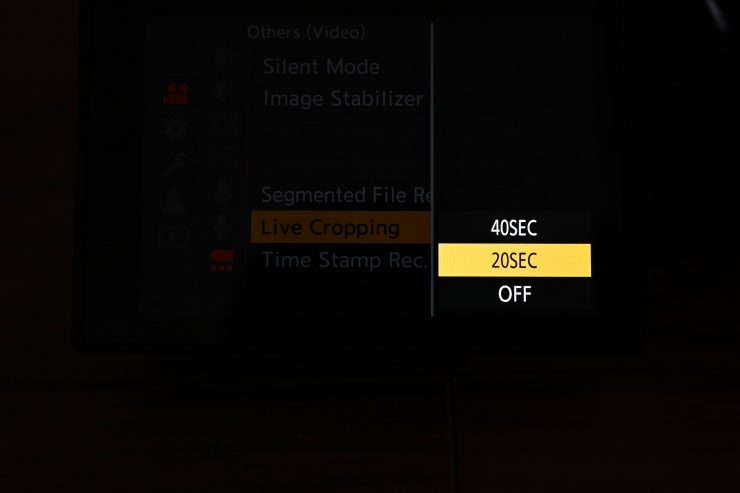
There is a little catch when using Live Cropping. You can only set the S5 to record for either 20 or 40 seconds. It’s a little strange that you can’t just set it to stay on whatever frame you have selected for as long as you want, but I’m sure Panasonic did this on purpose so that users wouldn’t forget that Live Cropping was activated.
So does it work well? In short yes. The zooms you can do are really smooth. The pans aren’t quite as good and they have a slightly digital feel to them. The only problem I have with Live Cropping is there is no way of setting a start or a pause at the end. Once you set your points and hit record, the zoom or pan instantly starts and then when it finishes it instantly stops. As you can also only select recording durations of 20 or 40 seconds, the usefulness of this function becomes somewhat limiting.
It’s also a little limiting that you can only get an HD recording. It would have been nice to be able to record in 4K. Yes, this wouldn’t allow for that much of a pan or zoom, but it would still be nice to have.
You really need to use a tripod when doing Live Cropping. While you can do it handheld, the results aren’t nearly as good. I did, however, find that if you are holding the camera very still you can still use the Live Cropping effect.
Live Cropping is a nice feature to have. While it’s great that you can do the cropping, panning, and zooming in-camera, there probably isn’t any real benefit overdoing it in post, unless you are handing footage off to a client or turning material around quickly.
Just to be crystal clear, anytime you are using Live Cropping, the recording will be done in HD. The HD recordings can be done at up to 60p 4.2.0 8 bit in MP4 only.
Timelapse
With the interval shooting function you can automatically set up time-lapse recording on the S5. The shooting interval can be set from 1 second to 99 minutes 59 seconds in increments of 1 second.
Once you finish recording a timelapse you can then turn it into a movie file without leaving the S5. The S5 supports 4K / 60p interval video generation. What is nice is that the exposure is smoothed when the video is being generated so you can create time-lapse videos with smooth exposure changes.
Audio
Good onboard audio recording is something that is rarely seen in mirrorless cameras. This is a pity because I would argue that manufacturers should be paying more attention to audio, especially with more video-centric models.
A good proportion of people buying an S5 are probably going to be doing there own audio and won’t have the benefit of using a sound recordist. So how is the audio on the S5?
I didn’t have access to the optional DMW-XLR1 audio module, but I did test the S5 by plugging in a microphone directly, as well as using a JuicedLink RM333.
When using the S5, the recording level range can be set from -12dB to +6dB. On the S1H you can set it from -18dB to + 12dB.
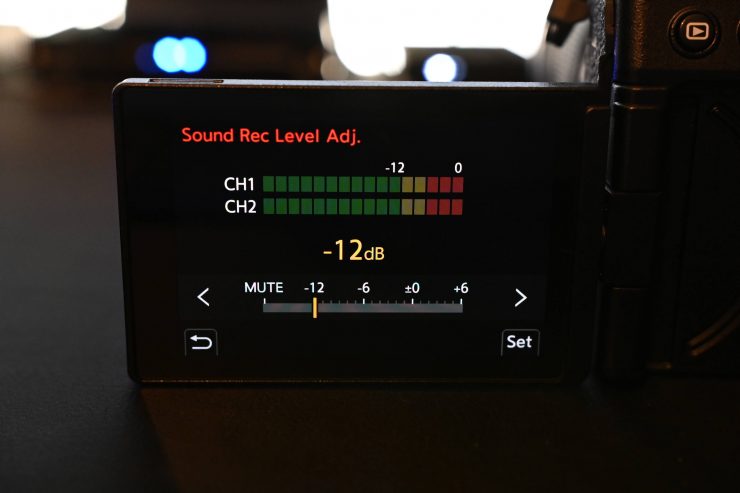
This ability to set the recording level very low means you can eliminate any internal pre-amp noise when you connect up an external audio device like a JuicedLink. When I hooked up the JuicedLink RM333, I set the S5 to [Low] and then set the recording level to -12db. This way I could take advantage of the good preamps on the JuicedLink and send in an audio signal that could be recorded at a nice level.
The audio I was able to capture was clean with no noise floor.
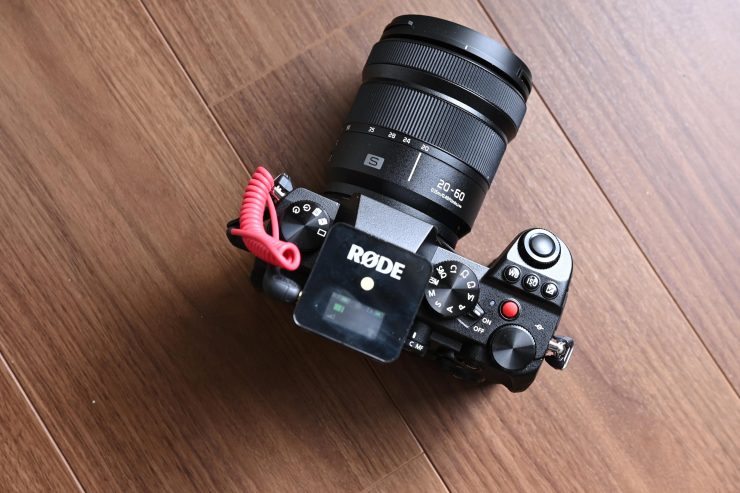
I also tested the S5 with a variety of RØDE microphones including the Wireless GO. Again, I was able to obtain good results.
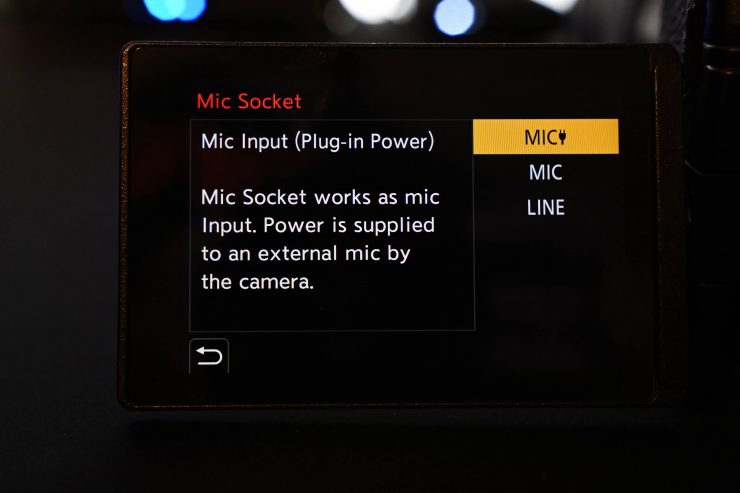
In the camera’s audio menu you can also select the type of input you want to choose.
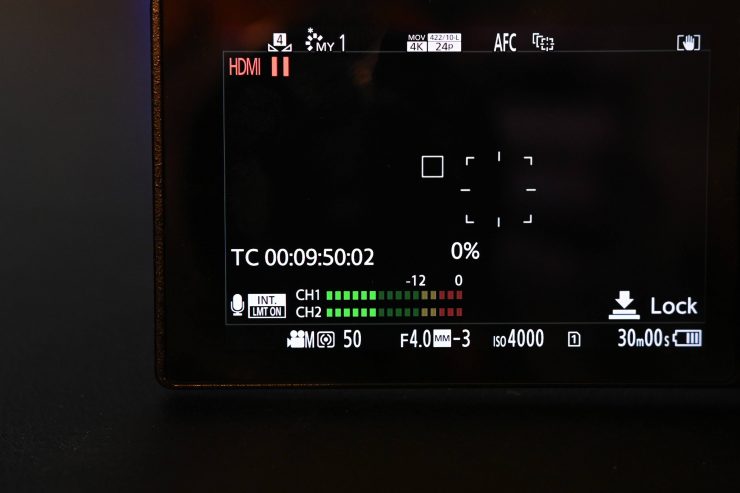
S5 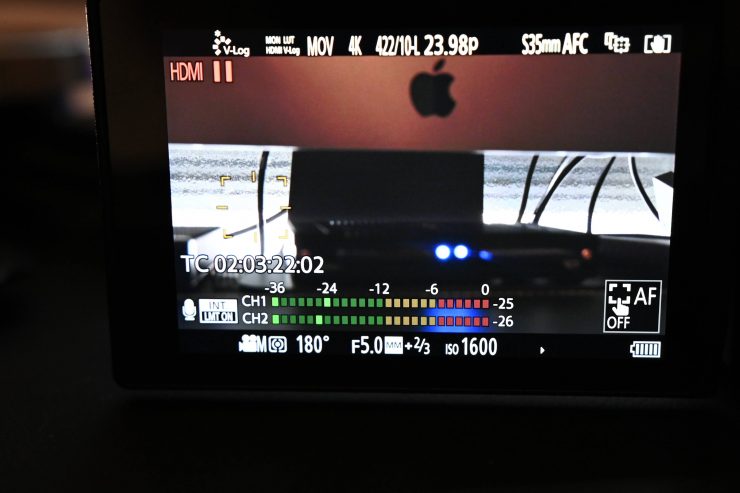
S1H
The S5 has a recording level meter that is displayed on the shooting screen. Unlike the S1H which uses meters with the same display characteristics as cinema cameras (-36dB to -12dB in 2dB increments and -12dB to 0dB in 1dB increments), the S5 only shows you indicators for -12dB and 0dB.
The S5 doesn’t display peak level values for each separate audio channel like the S1H does, in fact, it doesn’t display any peak audio values.
Now, as far as audio monitoring goes, the S5 has the same problem you will find on a lot of cameras. There is no way to monitor just channel 1 or just channel 2. If you are running two microphones, you hear one microphone through the left earphone and the other through the right. This really frustrates me. Why is it so hard to make a system where you can choose to monitor an individual channel and not just both at the same time.
The positive aspect of the headphone monitoring is that you can choose to listen to the audio in REALTIME, or you can choose RECSOUND, so you can monitor the outputted HDMI audio. This compensates for the slight audio delay.
DMW-XLR1
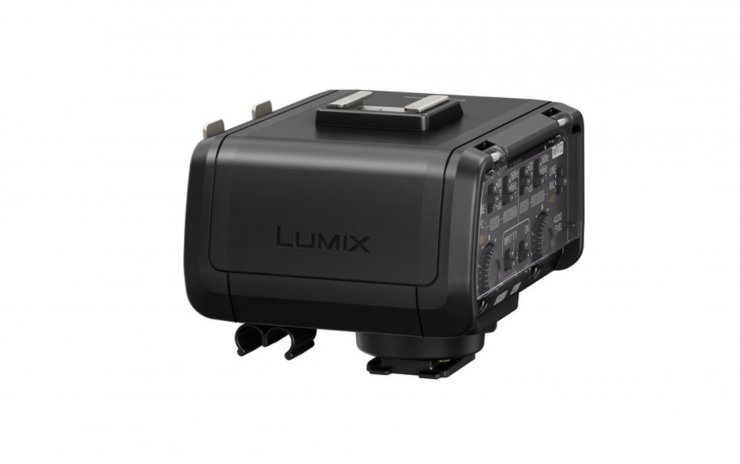
If I was buying an S5 I would also be purchasing the optional DMW-XLR1 audio module. This is the best way to keep the S5 relatively small while adding better audio recording options.
Timecode
The S5 has timecode, but unlike the S1H you can’t input timecode through a BNC conversion cable.
Video Assist Tools
Along with focus peaking, focus magnification, and zebras, the S5 also has a waveform as well as a luminance spot meter.
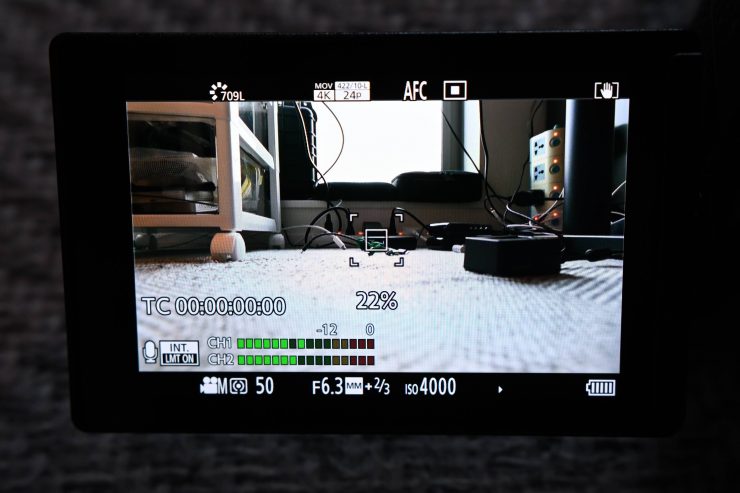
709L picture profile 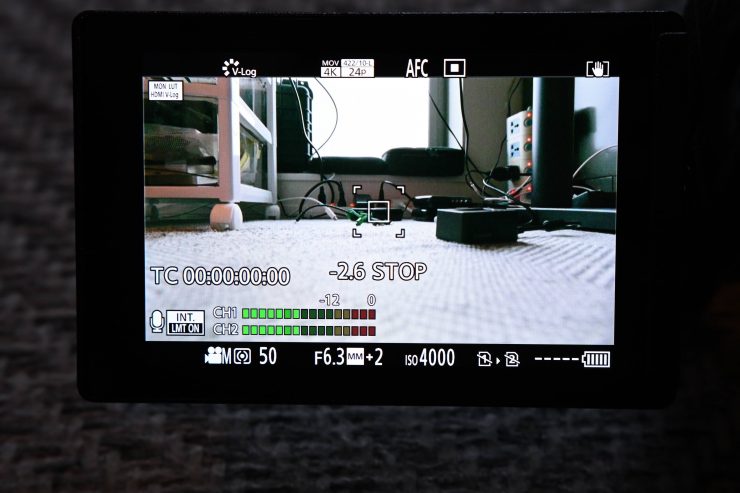
V-Log picture profile
The luminance spot value shows your IRE as a percentage. Strangely when you select V-Log as the picture profile the luminance spot value changes to +/- STOP values. I am not quite sure why Panasonic has done that. 0 Stop indicates an IRE value of 42%. If you shoot a 18% grey card then you can just adjust your aperture until it hits 0 Stop in V-Log and you know your exposure will be spot on.
I really like some of the video assist tools that Panasonic gives you. Luminance spot values and waveforms are really handy aids when you are shooting. By adding tools like these it shows me that Panasonic has actually talked to video shooters about features they want to see in cameras.
MENUS
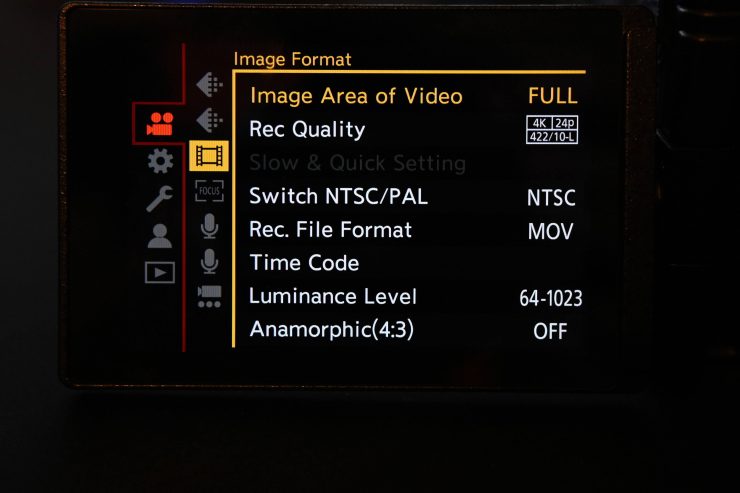
The menu system is ok on the S5, but it could be better. There is a lot of menu options and it can get a little confusing trying to make certain changes. While there is a video recording menu, you have to go into other sections to change certain parameters that still pertain to video shooting. I wish companies making hybrid mirrorless cameras would just have a system where when you are in video mode you only see video menus. Conversely, when you want to shoot still images you only see still image menus.
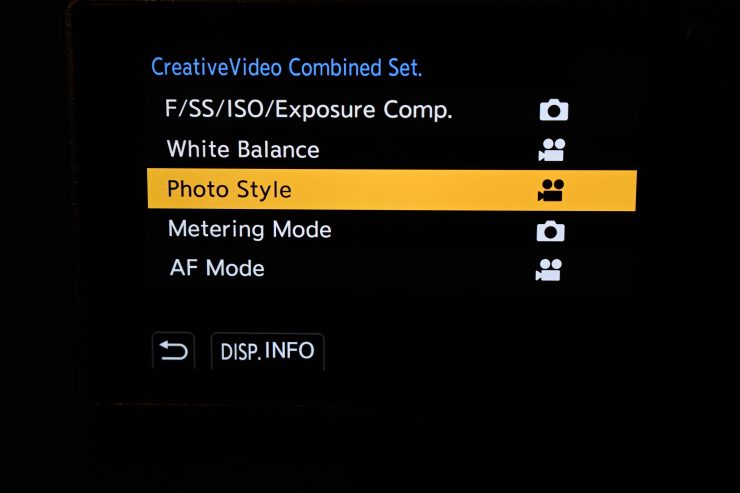
There are a few options you can change in the menu so when you switch from stills to video or video to stills it retains those settings.
By pressing the Q button you can bring up a quick way to change key parameters quickly.
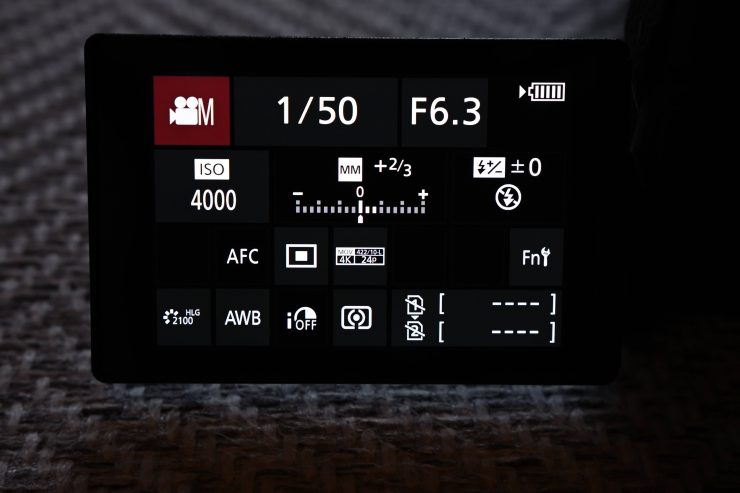
S5 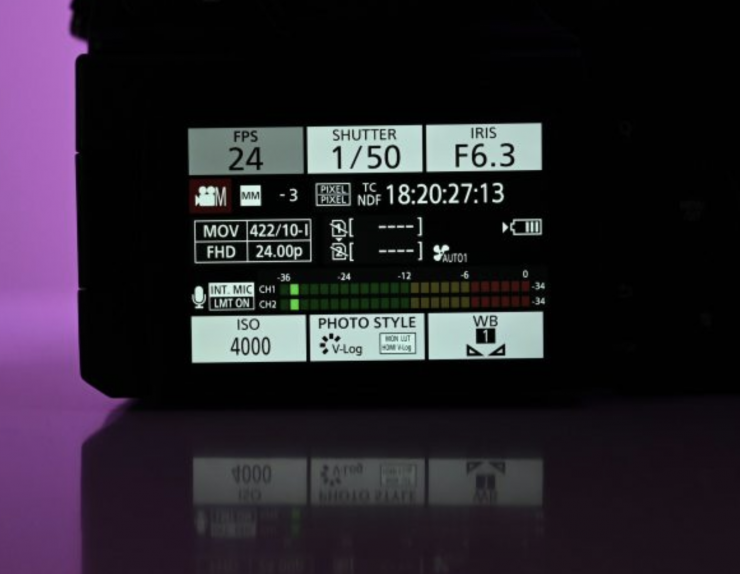
S1H
Unfortunately, the S5 doesn’t have the same video information display screen as you get on the S1H.
Battery & Battery Performance
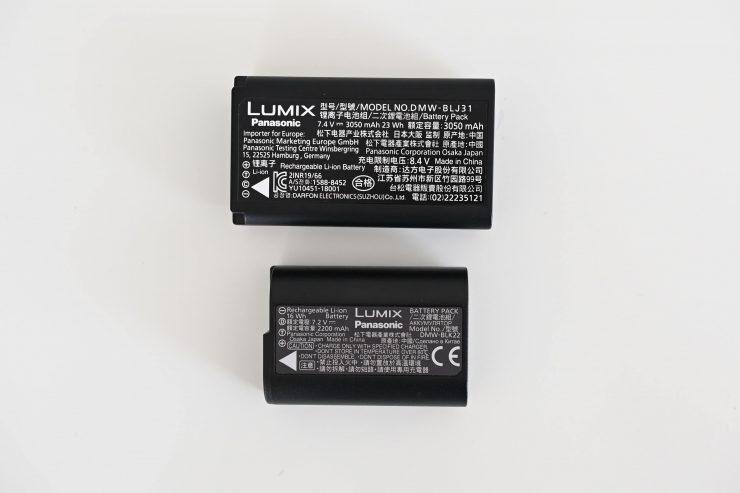
The S5 uses a different battery than the S1H, S1, and S1R. The S5 battery is the DMW-BLK22 and it has a capacity of 2200 mAh. As a comparison, the DMW-BLJ31 battery used in the other Lumix S cameras has a 3050 mAh capacity.
The S5 draws just 4.3W. The S1H draws 6.3W.
The battery takes a long time to charge. Using the included charger it takes 4 hours to fully charge up the battery. The battery can be quickly charged via USB PD (USB Power Delivery) using the bundled USB3.1 Type-C cable. The camera can be used while charging.
I found with the battery I could get around 110 minutes if I was shooting UHD 60p. In other modes, you will get slightly longer recording times.
Battery life is decent. You would probably need around 4 batteries to get you through a whole day of shooting.
A new battery grip called the DMW-BGS5 will also be available.
NTSC/PAL Compatible
Unlike the S1 which only allowed you to shoot in NTSC or Pal frame rates depending where in the world you bought it, the S5 is full PAL/NTSC switchable.
The nice thing about the S5 is that you can switch between NTSC/PAL without having to reboot the camera. On the S1H when you change the System Frequency you need to reboot the camera.
Usability
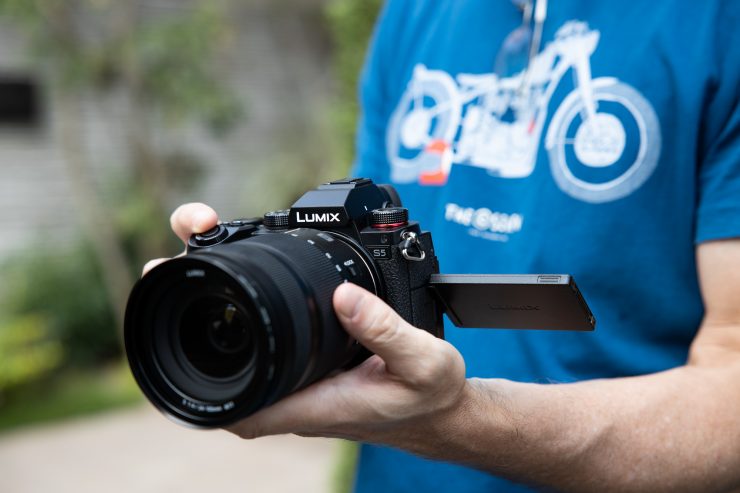
For me personally, usability is a huge factor when deciding on what camera to purchase. If the image quality is fantastic and the camera has a lot of great specifications that means nothing if it is a pain to use. I’m not the biggest fan of using mirrorless hybrid cameras for video. Personally, I much prefer to use a proper digital cinema camera, but to each their own. However, in certain situations, I will still use a mirrorless hybrid if it happens to be the right tool for the job.
A mirrorless camera needs to be functional, easy to operate, easy to navigate, and not have overheating, time restriction, or battery issues. Inevitably, most mirrorless hybrids won(t meet all of these requirements.
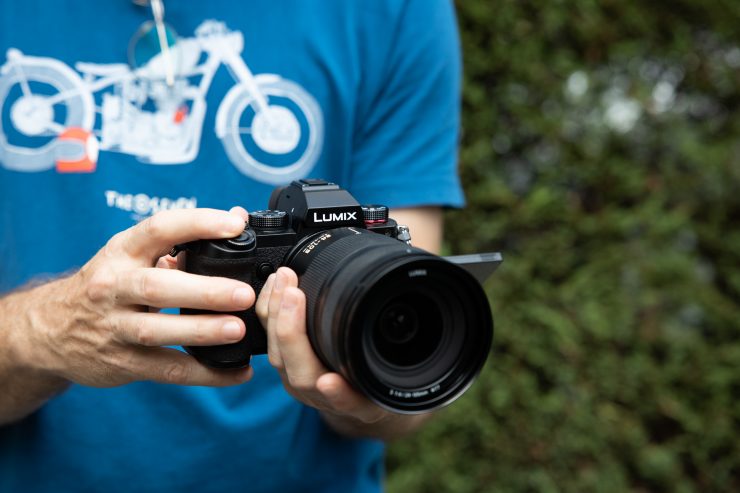
I found that while not perfect, the usability of the S5, for the most part, was pretty good. It certainly ticks a lot of boxes when it comes to handling, good battery performance, and a good feature set. The biggest caveat is the recording time limitations when shooting in 4:2:2 10-bit. The LCD screen and the EVF are pretty good and that certainly translates into making the S5 a very usable camera.
I love that by just pressing on the ISO and WB buttons you can cycle through the settings without having to go into any menus. This is very handy when you are working in fast-paced environments.
I enjoyed using the S5 once it is set up and configured for what you want to do. The S5 is certainly a camera you can just pick up and shoot with. With a good EVF, good LCD screen, and good internal recording options, you don’t really need to add an external recorder or monitor, and this, in turn, means you can get away without using a camera cage. Most importantly it also lets you keep a small camera small.
It was refreshing to be able to walk around with a camera and just shoot. The combination of IBIS and OSS allows you to get very steady footage without needing a tripod. The EVF and screen are good enough that I didn’t find myself needing to use an external monitor.
While it doesn’t have some of the bells and whistles of the much more expensive S1H you are still getting a very similar image quality and look for a lot less money.
For situations where you need to be more discreet or just look like a tourist taking photos, the S5 is a good option. It allows you to capture footage in places you would likely be kicked out if you were using a larger camera.
By adding the DMW-XLR1 audio module to the S5 you can create a very compact and lightweight setup. I like this, as for me personally, this is the whole reason to use a compact, mirrorless camera in the first place. I don’t want to turn any hybrid mirrorless into a frankenrig.
The menus as I mentioned earlier are ok, but there is certainly room for improvement. They aren’t nearly as intuitive as the menus on say a BMPCC6K.
The biggest downside for me is that you can’t punch in and check focus while recording. In some ways, this is almost forcing you to use an external monitor so you can do this. According to Panasonic, it’s not possible for them to have the ability to punch in when recording. Apparently, this has to do with the design of the processing engine and the data path from the sensor to the SD card. If they added in focus punch in when recording that would ultimately end up being burnt into your footage!
Now, this is also the case over HDMI. If you have the S5 hooked up to say an Atomos recorder and you aren’t recording internally, if you press the focus punch in on the camera then the Atomos will also record that punched in view.
Panasonic said when they released the S1H that they looking into changing this on future camera models. It obviously didn’t make it into the S5.
The other annoying thing is that if you have the waveform up and you are recording you can’t then take that waveform off the screen until you stop recording. he waveform is that it moves position when you hit the record button.
Unlike the S1H, the S5 only has a small red record button on the top of the camera. Although, it is well placed and easy to access.
What you also need to keep in mind is the S5 has all the same still photography capabilities of the S1H. This strong combination of still and video performance shouldn’t be overlooked. If you are doing multimedia work then there is a strong case for choosing a camera like the S5.
Who is it aimed at?

I personally see the S5 as being either a camera for those shooters who want to step up to full-frame from say a GH5, or users who like the smaller form factor of a mirrorless camera, but want something more video-centric.
It could also find a place as a B camera to compliment larger digital cinema cameras. If you are a Varicam LT, EVA1, S1H user, the S5 should match up nicely.
The camera will also appeal to those users who want to shoot anamorphic, and have the budget to rent lenses.
If you don’t use autofocus then the S5 makes for a very compelling option through the use of lens adapters.
Price & Availability
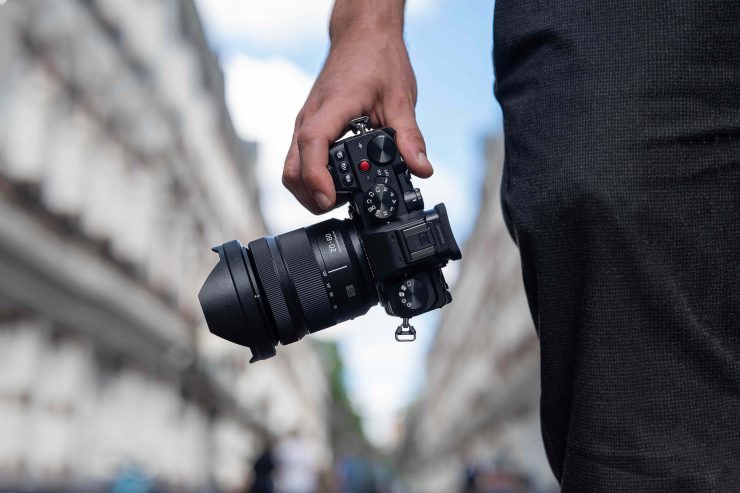
The S5 will retail for $1,997.99 USD. You can also get it with the new Lumix S 20-60mm F3.5-5.6 lens for $2,299 USD. It will start shipping later this month.
How does this price compare to the direct competition?
| PRICE | |
| Panasonic S5 | $1,997.99 USD |
| Panasonic S1 | $1,997.99 USD |
| Canon EOS R | $1,799 USD |
| Sony a7 III | $1,998 USD |
| Nikon Z6 | $1,796.95 USD |
What does this mean for the future of the S1?
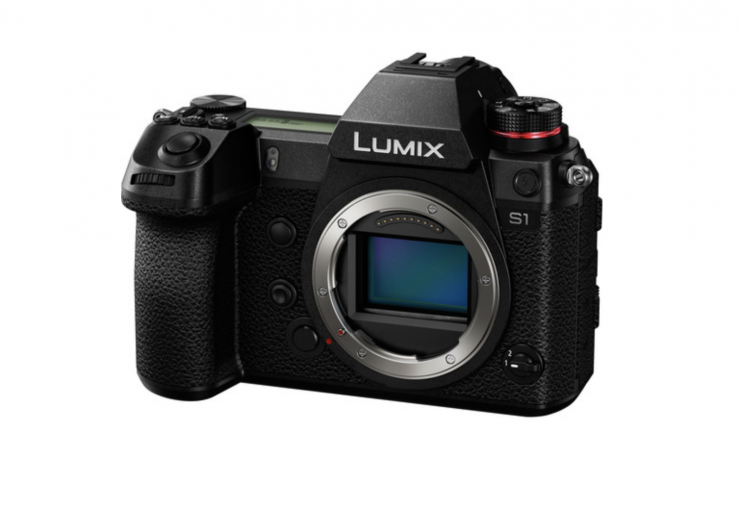
Panasonic will continue to sell the S1 along with the rest of the Lumix S cameras.
Just how well the S1 will sell given the capabilities of the S5 will be interesting to see. I can’t see many people now choosing an S1 over the S5.
I asked Panasonic if there would be a price drop on the S1 now that the S5 has been announced and they said currently there were no plans to do so. It would not surprise me to see the price of the S1 drop within the next few months.
Conclusion
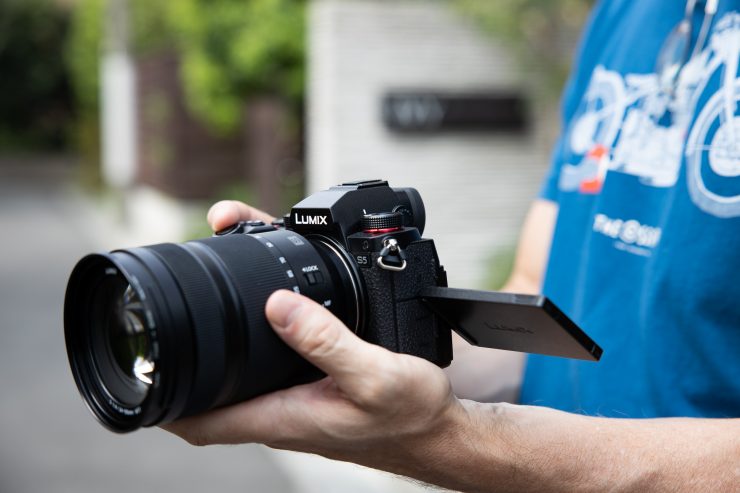
The S5 is certainly a very capable camera, especially when you compare it against its direct competition. In saying that, the camera is far from perfect, and just like any camera it has its flaws.
I like the form factor, build quality, and a lot of the features the S5 has to offer. The autofocus performance is much better than previous Lumix S cameras and it has now got the point where it is actually usable on the S5. It could still be a lot better, but at least Panasonic has listened to feedback and done as much as they probably could do with a contrast-based system.
I don’t like the fact you can’t punch in and check focus while your recording and that you can’t take the waveform off the screen once you hit the record button.
The biggest stumbling block Panasonic faces is with native lens selection, autofocus performance, and the fact that the competitor’s cameras have already been out for quite some time.
Despite these small niggling issues, the overall usability of the S5 is pretty good. It is a camera you can just pick up and shoot without having to turn it into a frankenrig.
The image quality is good, and while you can’t record in resolutions above 4K, and you don’t get ALL-I and unlimited recording times as you do with the S1H, it is still a very capable camera in this price class. Once the camera gets the ability to record in ProRes RAW it will add further versatility.
However, it is going to be a tough sell if Panasonic wants to attract customers who have already invested in Sony or Canon ecosystems. For a lot of hybrid mirrorless video shooters, autofocus is a big deal. Here is where Canon and Sony have a big leg up on the competition. Sony also has a far more substantial line-up of native lenses to choose from. Canon still doesn’t have that many native RF lenses available, but you can still get good auto-focus performance using EF glass through an adapter.
At under $2,000 USD, the S5 is going to appeal to quite a lot of shooters who want a smaller sized hybrid mirrorless camera that features a good blend of stills and video performance. The ability to record UHD in 4:2:2 10-bit at up to 29.98p internally is sure to be a big selling point, especially when compared to its direct competition. If you throw in cropped UHD 59.94p 4:2:0 10-bit internal recording, internal anamorphic recording, and the upcoming ability to record 5.9K RAW externally, the S5 starts to look a lot more appealing than a Canon EOS R, Sony a7 III, or Nikon Z6.
In saying that, specifications and features alone are not usually enough to get potential buyers to switch over camera systems. Lens choice is a huge factor when deciding on a mirrorless hybrid and that is something Panasonic still needs to work on.
Like what we do and want to support Newsshooter? Consider becoming a Patreon supporter and help us to continue being the best source of news and reviews for professional tools for the independent filmmaker.

